Scottish EstatesWho is buying?
Report on who is looking to acquire these iconic properties.

Pylons, market value & sale-ability
How pylons may impact property’s market value and ‘sale-ability’.
Northumberland
The sweet spot
Positioned between high prices in the south and high taxes in Scotland.
The importance of having the right agent
Having the right agent is paramount, but what is the right agent?




Spring 2024
Welcome to the Spring edition of Property Matters 2024


Bouncing back from a hesitant year
As I write, the property market is warming up and all of us in the estate agency division are feeling full of optimism as the season comes into full bloom.
It has to be said that 2023 was something of an ‘annus horribilis’ largely due to the impact of high interest rates, inflation and rapid fluctuation in the cost of financial products.
Consequently, many homeowners were disinclined to bring their property to the market, due to a lack of confidence. Transactions for the year including residential property, farms and estates were below the norm, although good market prices were achieved for those that did choose to sell last year.
The elusive ‘feel good factor’ was missing in 2023 but it followed on from an exceptionally busy 2021 and 2022 – when sales and indeed prices in the rural property sector were at their highest point for several decades.
It does underline what I always say: estate agents do not make the market – we work within it, teasing out the best outcome for our clients based on the most up to date market intel. Media reports are often slightly behind the curve or based on a
limited view. It is important to consider property from all angles of the market, in order to achieve the best outcome.
This year, inflation now seems to be coming back under control, interest rates have been held at 5.25% (at time of writing) and they may even fall slightly in the coming months.
This balanced outlook will help boost consumer confidence and we expect the supply of rural property to bounce back this year.
My colleagues and I are in the fortunate position of helping people to find their dream home in some of the most beautiful parts of the UK.
In these pages we take a look at some of these scenic areas in more detail and highlight the most interesting and appealing properties we have sold recently, as well as reflections on the market and updates on the latest legislative changes impacting the sector.
I wish all of you a very enjoyable summer and happy house hunting! n
 David Corrie Head of Estate Agency
David Corrie Head of Estate Agency
07824 690 199

david.corrie@galbraithgroup.com
Galbraith is a leading independent property consultancy. Drawing on a century of experience in land and property management the firm is progressive and dynamic employing over 200 people in offices throughout Scotland and the North of England. We provide a full range of property consulting services across the commercial, residential, rural and energy sectors. Galbraith provides a personal service, listening to clients and delivering advice to suit their particular opportunities and circumstances.
| Property Matters | Spring 2024








Contents See us on Instagram: www.instagram.com/GalbraithGroup Join us on Linkedin: www.linkedin.com /company/galbraith Follow us on X: @Galbraith_Group Like us on Facebook: www.facebook.com/ GalbraithPropertyconsultancy See us on TikTok: https://www.tiktok.com/ @galbraithgroup 4 A seaside retreat like no other. 12 Should you choose a solicitor estate agent or a property consultant? 7 Thinking of letting prior to selling? 8 Scottish Estates Who is buying? 13 Seeing doubleCouncil Tax rises for second homes in England and Scotland. 17 Q&A - Estate Agency with Jamie Currie. 18 The devil is in the detail. 19 Here if you need us. 22 Pylons, Market Value & Sale-ability. 25 A personal service can’t be replaced. 26 Field of dreams. 28 Scottish Farmland Market Update. 32 It’s a Material World. 34 The price is right. 42 The new repairing standard. 44 The importance of having the right agent. 46 Market ready? 14 Quality time. 38 The sweet spot. 20 The International question.
A seaside retreat like no other
Occasionally a property comes to the market that causes everyone to react in the same way – “Wow! If only….” followed by a collective reverie and dreams of parties, weekends and holidays in your own seaside hideaway.

| Property Matters | Spring 2024 Property Focus
The Old Lifeboat Station marketed earlier this year, was one such property.
Situated in a simply breathtaking setting in Dumfries & Galloway, this idyllic coastal retreat has its own slipway, direct access to the sea and panoramic views of Auchencairn Bay on the beautiful Solway Firth. With four bedrooms, two bathrooms and two reception rooms, the property is equally suitable as a permanent residence or holiday home.
As if this weren’t enough, the historic B-listed property is tucked away among six acres of gardens and woodland, with spring flowers, bluebells in May and banks of
rhododendron providing a blaze of colour in the summer.
The woodland is home to an abundance of wildlife including numerous birds, deer and resident red squirrels, while dolphins, seals and otters can be spotted offshore.
Established in 1884 as Balcary Lifeboat Station serving Auchencairn Bay, the station was in service until 1931.
The story of its conversion into an award-winning four-bedroom house is a testament to the imagination and tenacity of the owners, Jennifer and Duncan Hempstock.
The couple had been holidaying in the area since the early 1970s and had fallen in love with the beauty and tranquillity of the Solway Firth.
Having spotted the former lifeboat station, and despite having hardly seen the interior of the building, the couple made several approaches to the RNLI offering to purchase it, before eventually agreeing to a deal in the early 1990s.
From this point, the process of applying for planning permission began, which was finally granted, after four years of convoluted procedure, in 1996.
To describe the conversion work as a labour of love may be considered something of an understatement!


First of all an access track was required from the main entrance to the site down a steep slope to the house. Six hundred tonnes of granite chips were transported from Dalbeattie Quarry to create a suitably durable surface.
Next there was the small issue of installing a functioning supply of water to the house, along with buried cables for the electricity and the phone line.
After also installing a chimney stack and re-roofing, at last the design work could begin. A new kitchen was added to the westerly side of the house and a porch to provide essential storage for outside gear and muddy boots. A picture window was installed in the sitting room to make the most of the glorious sea views while Velux windows let in the light.
The property has been designed with great care and attention to detail, respecting its character and history while adding all the modern conveniences one could need.
The result is an extraordinary seaside retreat, combining the privacy and seclusion of its beautiful gardens, as well as the ability to launch a boat and enjoy water sports or swimming from the doorstep.
If you have a dream home you are thinking of bringing to the market, please contact us for an informal discussion.

 Marion Currie
Marion Currie
01556 505 346 marion.currie@galbraithgroup.com
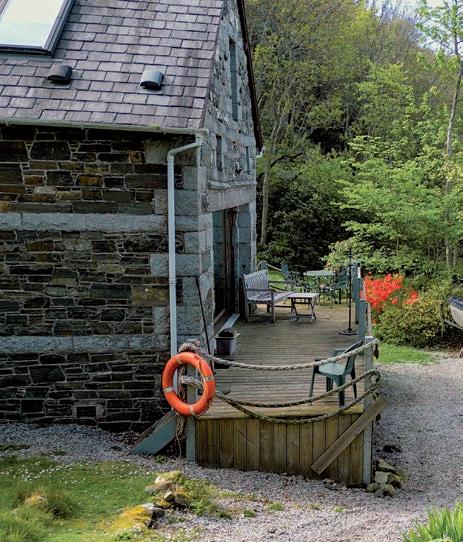
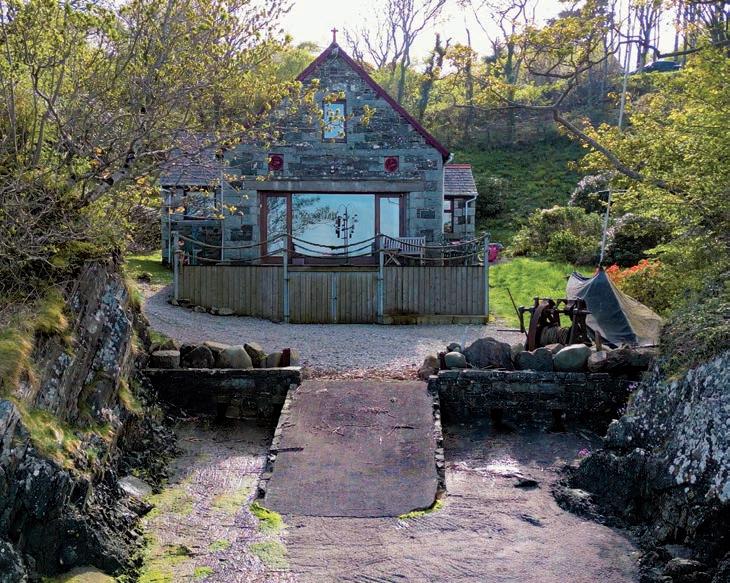
The
History of Balcary Lifeboat Station 1884 – 1931
By Duncan Hempstock
By the time the Balcary Station was established there were no less than five stations covering The Solway. Locally Rockcliffe, Barlocco, Rascarrel and Castle Point were frequently named sites of shipwrecks. Great gales were recorded in 1822, 1839, 1888, 1889 and 1894. No less than 32 sailing vessels foundered in the March gale of 1882.
The Committee of Management at the RNLI decided at a meeting on February 2nd 1884 to establish a station at Balcary.
Tenders were invited and James Brown of Manchester was the successful contractor. The cost was £1169, a bargain bearing in mind the station and slipway and tracks to it were completed by November 1884. A commodious building of solid granite to the chapel design, roughly 50ft by 20ft with 2ft walls. The foundations were built directly onto solid rock and huge boulders.
Whether by chance or design the site was located above an outcrop of
| Property Matters | Spring 2024

particularly hard stone which runs in a seam from Ireland under The Irish Sea and up again beside the boathouse. Geological students from Newcastle University visit every so often to study the hardness of this rock.
The inauguration of the first lifeboat took place on December 18th 1884 and after a service of dedication conducted by the Reverend Wark the boat was christened David Hay (ON 84) by Mrs Mackie of Auchencairn House, wife of the branch chairman.
The David Hay was first launched at 3.30pm on January 27th 1887 to assist the schooner City Of Perth, Creetown, which was in difficulty off Rascarrel Bay.
Probably the most memorable ‘shout’ was at 7pm on November 16th 1888 when the David Hay launched to assist the Glendalough, a schooner of Dublin. The vessel had a crew of 5 on board and was 9 miles from the station, grounded amongst sand banks off Bourne Point. Very high seas kicked up by a Westerly gale made the rescue even more hazardous, but all the crew were safely brought to shore via a tug base at Tilloth. It wasn’t until 4pm on the 18th November that the lifeboat crew returned safely to base.
In 1909 it was decided to merge the two stations and the Kirkcudbright coxswain George Parkhill took over. A motor vehicle conveyed the crew to Balcary as required.
On October 14th 1914 the David Hay was replaced by the Scotia (ON 643), a 10 oared ‘Self Righter’. The boat was started by Thames Ironworks in London and completed by S.E. Saunders of Cowes. The total cost was £1416. This lifeboat was provided as a gift to the Institution from Miss G.E Richings of Hemel Hempstead, but because of the first World War was named by Mrs Hollins on July 24th 1920. With the motorised vessel at Kirkcudbright now being the preferred lifeboat. The RNLI Committee of Management decided to close the station on July 16th 1931 and The Scotia was withdrawn from service on October 3rd. n
Thinking of letting prior to selling?
Our agents are often asked how easy it would be to let their home prior to proceeding with a future sale.
Perhaps a current planning application on a neighbouring property has delayed your sale and the option of letting becomes of interest. If you are thinking of going down this route, contact a member of the lettings team at Galbraith to discuss your options.
Private Rented Tenancy (PRT)
From 1st December 2017, The Private Housing (Tenancies) (Scotland) Act 2016 set out a new regime for Private Residential Tenancies (PRT), replacing the existing framework of Assured and Short Assured tenancies under the Housing (Scotland) act 1988.
Previously, a SAT (short assured tenancy) had a fixed term but now, under PRT, tenants are provided with a start date of tenancy and no end date, therefore there is NO fixed tenancy term.
Your tenant has to provide the landlord with at least 28 days' notice in writing if they want to end their tenancy (unless they ask for shorter notice and you agree in writing). The notice period will begin on the day you receive the notice from your tenant, and ends 28 days after that date.
Landlords need to provide tenants with an appropriate amount of time to leave the property and tell them under which grounds they are asking them to leave.
There are 18 different grounds (reasons) for ending a tenancy. If the landlord wants the tenant to leave the property at least one of these grounds must apply. If a landlord wishes to sell, they may require evidence to prove this. This could include a letter from a solicitor or an estate agent, or a recent home report for the property. The notice period to the tenant will be three months from the date received.
We find that the majority of tenants do vacate on their provided termination date, however if they don’t, the landlord will need to apply to the First Tier Tribunal (Scotland).
Our advice is to always be upfront with your tenant. If you know you only intend to let for a short term and have a view to then issue notice, informing the tenant of this information prior to viewing will stop any time wasting and when notice is served, it is not a surprise. Some tenants will not be at all phased by a short tenancy, it may in fact suit their circumstances but giving them all the information before they enter into a tenancy agreement will save time and hassle for both landlord and tenant. n


Susan Guthrie 01573 224 244 susan.guthrie@galbraithgroup.com
Over the last five or so years, we have seen the market for those looking to acquire these iconic properties expand beyond what was traditionally mainly restricted to those with sporting and occasionally agricultural interests.
Scottish Estates Who is buying?
Back when I started my career as a rural surveyor over 20 years ago, your typical Scottish estate (if there can be such a thing) would be of principal interest to those looking to stalk, shoot, fish or farm. The desire to own and enjoy a piece of rural Scotland was then highly sought after, as is still very much the case.
However, over the intervening years and especially more recently, the market has expanded to include those with a far more diverse range of interests. The traditional sporting market still thrives however, the range of interested buyers also now includes those to whom the peace and solitude of owning a part of ‘wild’ Scotland is the principal driver and where having access to remote and undisturbed spaces is the primary objective.

| Property Matters | Spring 2024
 n Pluscarden Estate, Elgin
n Pluscarden Estate, Elgin

Similarly, there are many who relish the opportunity an estate may offer to create and establish a rural business such as holiday lets, a hospitality venue or as a site for the creation of bespoke products such as a micro-brewery or gin distillery!
Undoubtedly, interest peaked during the pandemic years, but it was also the time when a whole “new” buyer profile arrived – the Natural Capital focussed purchaser.
As a firm, we at Galbraith have witnessed this changing market first hand. A prime example in 2019 was when we brought to the market
Auchavan Estate; an idyllic estate lying within the iconic Angus Glens and offering traditional field sports together with a number of houses, hill farming opportunities and forestry. Those interested in buying were principally traditionally based with one or two conservation/re-wilding orientated buyers also coming forward and ultimately, it was a ‘traditional’ buyer who acquired the property.
Moving forward to 2020, Kinrara Estate in Inverness-shire was brought to the
open market and by this point the market had significantly expanded and was being driven by private buyers, institutions and investment vehicles seeking to invest in woodland creation and explore the phenomenon now widely referred to as ‘natural capital’. We also arranged the sale of an extensive stock hill farm and without exception, all the interest was in the potential to manage the ‘natural capital’.
The press coverage for the following two years, up to the second half of 2022, indicated that land in Scotland was principally being sold for forestry planting and/or conservation and biodiversity interests. There was very much a gold rush during this time with estates and hill farms generating high demand and achieving strong sale prices thus the value of this more marginal quality land did rise accordingly. However, the buyers, based both in the UK and internationally, also included traditional buyers and they were not all buyers securing land for

| Property Matters | Spring 2024
n Finegand Estate, Glenshee
forestry planting, conservation and biodiversity projects. Examples being Pluscarden Estate in Moray and Finegand Estate in Perthshire, both being sold to traditional estate buyers.
We have now entered 2024 and the high demand for Scottish estates remains. There continues to be keen interest from buyers not only based in Scotland and the UK, but also internationally where the perennial appreciation of our scenery, amenity, culture and history, not to mention traditional sporting interests are still core. The natural capital gold rush may have slowed somewhat but there are still many with a more than strong interest in natural capital. National aspirations towards a net zero carbon footprint grows stronger and Scottish estates and their effective management have proven to be exceptional vehicles to help achieve this aim.
The difference today, compared to say two years ago, is that there is a
more considered and measured approach to any estate purchase with buyers taking time to undertake their own due diligence. Rather than rush in headfirst, asking questions later, a buyer (and their professional advisors) will undertake extensive research and analysis in advance of offering and amongst other investigations may well look to instruct soil surveys, peatland assessments, bird surveys and woodland creation assessments. The list can be extensive and bespoke depending on the particular interests of the buyer.
From the seller’s perspective, a successful sales outcome relies on generating interest and competition and is achieved by having a tailored and professional marketing campaign, complimented with careful pricing. Given the now far broader spectrum of buyers with their diverse range of interests and key criteria, making an accurate
Undoubtedly, interest peaked during the pandemic years, but it was also the time when a whole “new” buyer profile arrived – the Natural Capital focussed purchaser...
Emma Chalmers

valuation of an estate is now more specialised and intricate than ever before.
Detailed knowledge and evidence of previous sales is key to making an accurate assessment, setting a realistic and achievable guide price and ultimately achieving the best possible sale. That said, as has always been the case and will always be “it is only worth what someone is prepared to pay” and this is really only ever established by generating interest and competition by fully testing the open market.
Going forward this year there will certainly be further Scottish estates coming to the market. Demand continues from this new broader range of buyers and we certainly do not anticipate this to diminish. n
Emma Chalmers 01738 451 111
emma.chalmers@galbraithgroup.com

 n Kilravock Castle Estate, Inverness
n Kilravock Castle Estate, Inverness
Should you choose A SOLICITOR, ESTATE AGENT PROPERTY CONSULTANT? or a




In Scotland many properties are sold by estate agents working within a firm of solicitors, originating from the traditional working practice of solicitors being involved with all the legal affairs of individuals or families. Often touted as a “one-stop shop”, the same firm deals with both the legal and marketing aspects of the sale of a property and is classed as a Solicitor Estate Agent (SEA). But is this the right fit for all?
Specialisation
Property consultants are classed as non-solicitor estate agents (NSEAs) and often have specialist portfolios, in Galbraith’s case aspirational residential property, mainly in rural areas, along with country houses, farms, estates, land and equestrian property. We have an in-depth knowledge and understanding of this market.
Solicitor Communications
The link between SEAs and a solicitor is often falsely perceived as an advantage over NSEAs who don’t deal with the legal aspect of the sale, but at Galbraith we have formed close professional relationships with solicitors and work in conjunction with them on all aspects of the sale, communicating throughout the process so everyone involved is kept informed of any new development, ensuring that matters can progress quickly and smoothly and if any issues arise then these are dealt with timeously. Galbraith provides a personal and individual approach to every client and depending on the type of property being marketed can recommend certain solicitors to use
for the conveyancing process with reference to their particular area of expertise, for example crofting. Often solicitors with their own agencies refer the sale of their client’s property to Galbraith due to the nature of our portfolio, local knowledge and experience.
Coverage & Marketing
A property consultant can offer superior coverage compared to a solicitor estate agent due to having a national presence and Galbraith has over 200 employees throughout Scotland and the north of England, and in addition we have access to diverse markets through our varied property-based business streams and firm-wide experience as property consultants, residential lettings specialists, land managers and expertise in valuations and development. Our extensive interoffice database of active purchasers allows our clients to present their property to the widest possible market and with high quality marketing material, including professional photography rather than the in-house production favoured by the SEAs.
This database of active buyers is a key point of differentiation between a solicitor estate agent and a property consultant.
Rules & Regs
Buyers and sellers should be assured that both SEAs and NSEAs and all the professionals involved in a property sale are regulated by their membership organisations, be that the Law Society of Scotland or the Royal Institution of Chartered Surveyors, and all estate agents must belong to an approved redress scheme. SEAs and NSEAs are bound by the law of Scotland but NSEAs are not bound the Law Society of Scotland’s by rules and guidelines. These can be rather restrictive in terms of when a seller can receive and accept an offer. A property consultancy can offer expert advice and negotiation by qualified agents, ensuring the best result for the seller. n
Thomas Jones
07867 441 983
thomas.jones@galbraithgroup.com
| Property Matters | Spring 2024
specialises in aspirational residential property, mainly in rural areas, along with country houses, farms estates, land and equestrian property...



Seeing double - Council Tax rises for second homes in England and Scotland

Have you gone to check on your holiday home only to find a strange letter from your council telling you they are increasing your council tax after April 1st?
What is happening in Scotland?
Legislation passed in December 2023 allows local authorities in Scotland to charge up to double council tax rates on second homes. The change will bring second home council tax rules into line with long-term empty homes from April 2024
What about England?
Second homeowners in England could face paying twice the amount of second home council tax from April 2025, under
a new law. Under the Levelling Up and Regeneration Act 2023, councils were given the discretion to charge additional council tax of up to 100% on furnished homes not used as a sole or main residence.
Why are local councils doing this?
The aim is to ‘prioritise housing for living in’ which will bring second homes in line with council tax policy on long term empty homes.
What is a second home?
When it comes to second home council tax rules, second homes are defined as furnished properties where no one lives, or the owner has a main home elsewhere.

What can you do?
Unfortunately, there isn’t anything you can do to avoid this new tax increase. However, there are special circumstances that allow discounts. Some councils will give a 50% discount on second home council tax if the council taxpayer must live elsewhere in job-related accommodation because of the terms of their employment.
Council tax on holiday lets in England
Since 1 April 2023, to be rated as a selfcatering property and valued for business rates, the property will need to be available for short let periods for at least 140 days in total over the current and previous tax years. It will also need to have been actually let for at least 70 days in the last 12 months.
Council tax on holiday lets in Scotland
And in Scotland, if your property is available to let for 140 days or more a year and has been let for 70 days in a financial year, contact your local assessor to find out if your property, or part of it, might be liable for business rates. n

Jamie Currie
07899 877 739

jamie.currie@galbraithgroup.com
QUALITY TIME
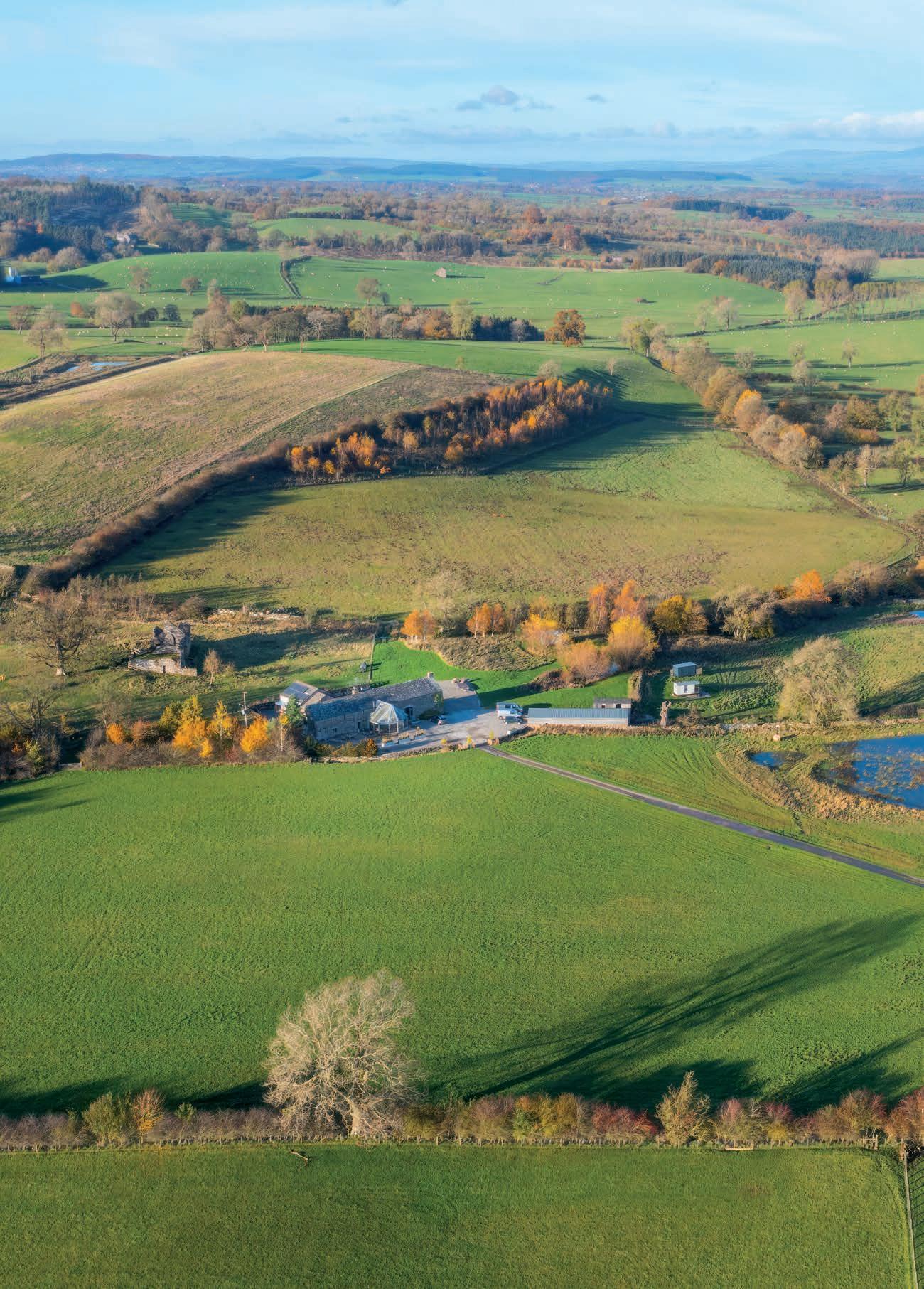
Rural properties that offer the chance to de-stress, unwind and reconnect with nature
| Property Matters | Spring 2024
As many of us feel that we are constantly juggling different demands on our time and hectic daily lives, a rural property that offers space and privacy is a true luxury.
In the north of England, off-grid and off the beaten track properties provide an idyllic, private lifestyle, and an escape from the stresses and strains of modern living. Fortunately, that does not necessarily mean a total disconnection from the world! Most buyers value the panoramic views but they also want, or may need, a functional internet connection, and there are various ways to achieve this, and have the best of both worlds.
Northumberland in particular has miles upon miles of rugged moorland, huge beaches, rolling hills and meandering river valleys, ancient woodlands, sublimely dark skies for the best star gazing, fresh air and a sense of space. It is the perfect location to create a secluded bolthole, far from the humdrum of daily life.
Modern technology means there is still the option to connect with friends and family, work from home, or even run a business from your rural retreat.
Three of our most beautiful off the beaten track properties brought together these lifestyle qualities and generated interest from near and far.
Leadmill, which was on the market last year, is a charming off-grid period cottage, set in an isolated location at the bottom of a single-track lane in the North Pennines.
The property, set amidst ancient oak woodland and bordering the river Derwent, as it loops around Muggleswick Woods, offered enormous potential to create a superb family home in an Area of Outstanding Natural Beauty. The grounds were attractive and of a manageable size, while this part of the North Pennines offers the ultimate setting for privacy and tranquility.
The owners were both self-sufficient and forwardthinking regular London commuters, making use of a private water supply from a natural source, with electricity provided by solar cells and a battery, alongside a back-up diesel generator. They also installed a Starlink internet connection, providing high
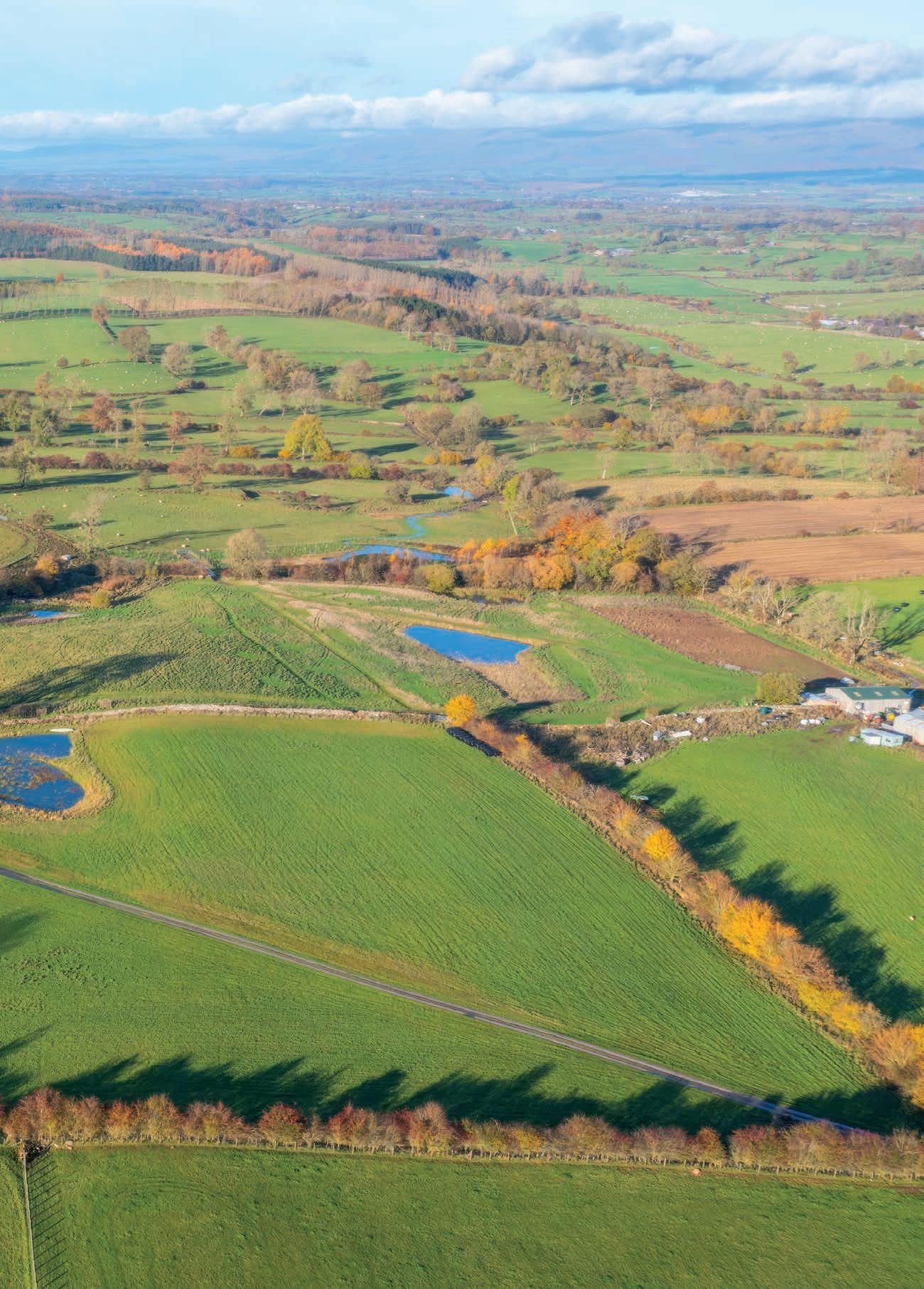

n Crake Trees Manor Farm Yorkshire Dales National Park
Property Focus

speed broadband connectivity of about 80 Mbps, easily sufficient for work and social use.
This combination of idyllic rural living with good connectivity is an ideal mix for many buyers.
Another of our popular properties, Threpwood Hill, offers an excellent opportunity to re-develop a traditional game keeper’s lodge in a wonderfully isolated and peaceful countryside setting. The off-grid property benefits from full planning permission to create a charming fourbedroom house incorporating the stone-built outbuildings.
Set deep into the Northumbrian countryside Threpwood Hill provides a true escape from the hustle and bustle and this tranquility - along with the 360-degree panoramic views -is a major selling point.
The third of our beautiful rural trio, Crake Trees Manor Farm, has been the life’s work of the owners, who had created a thriving farm, a significant wetland habitat with abundant wildlife, as well as developing a diversified tourism business with an emphasis on sustainability, championing homegrown and local produce.
Situated within the Yorkshire Dales National Park and close to the Lake District National Park, Crake Trees Manor Farm offers a superb lifestyle in one of the most beautiful parts of the country, with glorious views and a

variety of established rural businesses to continue, or further develop, as preferred.
The region is a haven of tranquility, ideal for people looking for a glamping or walking holiday in this beautiful and lesser-known part of the Yorkshire Dales National Park.
The owners of Crake Trees Manor Farm manage all their businesses from home, making use of good connectivity and a network of likeminded agri-businesses in the local area.
Crake Trees Manor Farm includes woodland and farmland, a special five-bedroom farmhouse and annex, a traditional barn with permission to


convert, as well as outbuildings, four camping pods and a camping field for up to 40 tents. Despite the glorious setting, the proximity of the A66, five miles distant, allows easy access to the Lake District and connection to the M6.
If you have a rural idyll that you would like to bring to the market, please do call us to discuss your needs. n


| Property Matters | Spring 2024
n Threpwood Hill Northumbria
Sam Gibson 07769 687 978 sam.gibson@galbraithgroup.com
n Leadmill North Pennines
Q A
Estate Agency with Jamie Currie
Jamie Currie joined the Galbraith Agency team in September 2023, based in the Stirling office. For the latest edition of Recruitment Matters, he sat down for a Q&A about his work as an Estate Agent.

Can you tell us about your role at Galbraith?
I am an Estate Agent, based in Stirling, where I sell residential and rural property across the West coast of Scotland, Stirlingshire, and Lanarkshire. It is quite a large geographic area.
What has been the career path that has taken you to where you are today?
I was preparing to leave school and I was a bit unsure about what I wanted to do. I joined a local estate agent as a Trainee Letting Agent then joined another local firm as they offered both sales and lettings experience. I worked my way through the ranks from Viewing Agent to pitching sales weekly. Now I cover a variety of work here at Galbraith and it is nice to use these experiences in my day job.
There must be a vast number of benefits covering such a wide geographical area?
To start, it is beautiful. I get to drive through the Trossachs and around various Lochs, passing some of the most brilliant landscapes in Scotland, on the way to an appointment. Both on a personal and a professional level it is extremely easy to sell something that you have that enjoyment looking at yourself.
Does working for a firm with offices across the country allow for much more crossover with colleagues in different areas?
It does! My geography borders our colleagues in Inverness, Perth, Cupar, Edinburgh and Kelso. There are always opportunities and although we have borders, they are merely a guide and we constantly work together on property, which allows for more hands-on experience which benefits the client.
What has been the biggest difference between joining a multifaceted firm like Galbraith compared to your previous work?
The volume of work is different. At Galbraith I can dedicate more time and attention to detail than I have had previously. The reality is that each client is offered much more attention to detail and a far greater personal experience.
What have you enjoyed most about your time here so far?
The culture is fantastic. I was not sure how I would feel when walking through the door for the first time because of the size of the business and number of staff. Everybody is so easy to get on with and you do not feel overwhelmed by a corporate environment. We have such a close-knit team, but there is the advantage of an almost global reach between the 14 offices and the national and international buyers on our database..
How do you see the role of the Estate Agent changing in the coming years?
Even since I started my career it has changed massively with the advancement in technology. However, I think it is going back to a more traditional way of working with people relying on a more “'hands on”' experience with the agent. After Covid there were a lot of people setting themselves up as estate agents with no prior experience. You should work with someone who has different experiences and is not relying solely on technology, whereas we like to get people through the door with a personal approach. Technology is certainly very helpful but it is no substitute for experience. Galbraith fosters a close relationship with its clients, through meetings in person and a constant flow of communication.

Jamie Currie 07899 877 739

jamie.currie@galbraithgroup.com

The devil is in the detail
As a firm of chartered surveyors and estate agents, a significant proportion of our work involves property valuations and in most cases, these are rurally located.


The reasons for carrying out a valuation are numerous; most commonly when our estate agency team are making an assessment for marketing purposes whilst more formal valuations may be required if a property is being offered as security on behalf of a lender, for tax planning purposes, internal business restructuring, property purchasing advice, asset transfer or family wealth planning to offer but a few reasons.
No matter what purpose the valuation is required for, it is imperative that it is carried out as professionally as possible. Big decisions and plans can rest upon making as accurate an assessment of value as possible and over the years, we have developed processes and methodologies that allow us to report accurately on a wide range of rural properties. In most cases, for example, in the valuation of a farm being offered as bank security for a loan, the valuer will adopt the ‘comparables’ method to assess value. As the name suggests, this is when the valuer compares the property against other relevant properties sold in the local area and ideally where the sale is as recent as possible. This isn’t always possible, especially if there haven’t been many recent sales or the property has special or unusual characteristics, for instance specialist grain storage and in these circumstances the search area may be extended over a wider geographical range or the time frames lengthened to capture more data.
Generally speaking, the closer the location and the more recent the better. The property would be inspected by the valuer and as much relevant detail taken not only from the physical property inspection but also from considerable desk top based due diligence too. Data is then collated and analysed to the point that the valuer, under peer review, will be able to report a figure that is as accurate as possible but also justifiable with a coherent and clear ‘story’. Guestimates, gut feels and hunches are one thing and on occasion can be right but they won’t stand up to scrutiny. Hence, we work diligently to ensure what we report carries sufficient weight. At Galbraith as well as being fortunate in having a large estate agency operation, we have invested heavily in a GIS data base and so we have access to the best data possible and our valuers and agents work closely together to make sure each sale is sensibly analysed. Behind each sale there is a story and it is vital that the valuer is aware of any special circumstances that might have influenced a particular result; What were the marketing conditions at the time? Did the property sell in a competitive situation on the open market? Was it an off market, private deal? Was the offer accepted significantly ahead of the pack e.g. where a neighbour paid a significant premium to acquire land on their boundary? Was the sale ‘distressed’ for some reason and the offer accepted lower than may otherwise have been the case. The








| Property Matters | Spring 2024
more data the valuer has available, the more accurate the picture he or she can paint.
So what sort of things do we consider when valuing property?
Sticking to our farm example, the list is almost inexhaustive, however, the main influencing factors will include the acreage, the land quality, recent and potential land uses, the number of and quality of any housing stock, farm buildings – are these fit for purpose for modern farming? road access, flood risk, tenure – are there any long term leases in place and if so, on what terms?. The list can and does go on. More recently and certainly when considering upland holdings in particular, we are assessing the properties in terms of their natural capital potential too. This is an area that has experienced a significant ‘gold rush’ in the past 3 or 4 years with buyers paying hefty premiums to acquire large tracts of land for tree planting and peat restoration projects as long term carbon sinks. Of course, ‘natural capital’ is a far wider subject than this and my previous sentence barely scratches the surface. However, suffice to say, the valuer needs to be aware of what drives a buyer to make the decisions they do in any particular market. n

Rod Christie 01343 546 362

rod.christie@galbraithgroup.com


Here if you need us
Rebecca Reed is one of 23 dedicated first aiders at Galbraith, who are now qualified to provide mental health first aid to their colleagues. She explains how and why this initiative came about. Galbraith has put in place a network of support encompassing emergency first aid in the workplace and now mental health too.
We are a large company and staff are involved in a wide range of occupations, from rural business advice to building surveying, estate agency, forestry, energy, utilities and commercial property. We are also spread geographically from the Highlands and islands of Scotland to the north of England.
Our culture has always been supportive, with a good sense of team spirit and camaraderie, and options to work parttime or to work from home for part of the week when this is most beneficial.


The human resources department has over the past few years identified further opportunities to expand the support provided to all employees. The aim was to have a member of staff in each region who would be identified as a source of support and information for colleagues from anywhere in the firm.
Through Public Health Scotland we undertook a two-day training course on mental health in the workplace. I found it hugely beneficial and in discussion with my colleagues, I know everyone took something useful away from the training.
The idea is not to become mental health practitioners ourselves, but rather to be a friendly face who will be approachable and who can steer people in the right direction to access appropriate support. In some parts of the country there are specialist online resources and web sites, while in other areas there may be drop-in support sessions, tips for managing stress or issues such as bereavement, while in other cases the advice is to make an appointment to see your GP.
We are not intending to constantly ask each other “How are you really?” as that
could become rather intrusive. We do however want to be known and available for contact from people anywhere in the firm who are facing challenges whether at work or at home. Many of us said that the tips for managing stress have proved immensely useful. Galbraith encourages its staff to take their breaks – whether it is a lunch hour or just to stop and have a cup of tea for 10 minutes or get outside for a short walk in the fresh air, these pauses can make a huge difference in a busy working week. Modern technology enables all of us to be contactable through a range of different platforms. This can be immensely convenient but it can also expand our working week to feel like an ‘always on call’ status. Galbraith encourages us to work collaboratively and productively, but not 24 hours a day, seven days a week.
The best advice for people in many kinds of jobs, is to understand that, although you might receive a WhatsApp or an email from an important client at 6am or at 9pm, it doesn’t mean that you should be on alert and expected to respond immediately at all hours of the day. It is important for all of us to set aside time to rest and reset.
The firm has also offered one-hour training courses to every single member of staff to provide tips and advice on day-to-day stress, work and life challenges. As a busy parent, I have taken some of the tips and put them into practice with my adolescent children, an added benefit I certainly had not expected!
Several people have already told me how much they appreciate the network of support available in the background. We aim to be here if needed. n Rebecca Reed 01556 505 346


rebecca.reed@galbraithgroup.com
INTERNATIONAL QUESTION THE









| Property Matters | Spring 2024
As agents we are very regularly asked “how do you tap into the south of England and international buyers when you don’t have any offices in the south or abroad”?
I and my fellow agent colleagues have always found this an interesting but easy to answer question. For over 20 years we have had considerable access to UK and international buyers thanks to the internet and our ever growing social media activity.
Now and partially as a result of the lockdowns during Covid, digital communications worldwide have cemented our global presence. Indeed, during the covid years virtual viewings took off due to physical viewings being unavailable or restricted, and are for some, here to stay and now very much part of our marketing mix ensuring our reach extends to every corner of the world.

is a national firm synonymous with rural and premium property. Our brand has a significant global reach...



We discuss the International question regularly with a number of our colleagues who, having had careers based in the south, know first-hand that when they were sitting behind that southern based desk, they were not fielding calls or engaging in face-to-face meetings with individuals looking to move to the north. Instead, as is the case with us, they were conversing with buyers from multiple locations looking to buy in their area.
The vast majority of buyers, especially those we principally deal with who are looking for a rural property, be it an estate, country house, smallholding, cottage or farm, usually start their search online using a variety of platforms including agents' websites and property portals such as OnTheMarket. This is then complemented furtherby following agents on their social media platforms as well as by direct communication with selling agents too.
Following the birth of the internet and property portals, having offices located across the globe was no longer relevant when searching for property in rural Scotland. Since the early 2000’s buyers located anywhere in the world have been able to access instant information wherever they are and at any time. Firms such as Galbraith, who invested heavily in its online digital presence have reaped the rewards and together with good old fashioned local knowledge, unrivalled experience and the desire to offer the highest levels of service have ensured the firm is able to meet global buyer demands.
Galbraith is a national firm synonymous with rural and premium property. Our brand has a significant global reach reflected in our 2023 online statistics showing that we had over a quarter of a million visits from individuals outside of the UK with the top 5 visiting countries, being the USA, Germany, Netherlands, Canada and Australia. The remaining 5
out of the top 10 being European countries. We have found that over the past three years, on average 45% of our property enquiries are from potential buyers looking to move to either Scotland or northern England and who are currently based outside their desired search area.
When buyers are interested in moving to a new area, they research selling agents specialising in their geographical area of choice followed by direct communication. Whilst our digital presence gives us a global platform, it does not detract from the most important tool an agent offers during the selling and purchasing process –knowledgeable and informed conversation and guidance. Buying and selling property is hugely significant to all involved and is much more than mere bricks and mortar, most importantly it’s a home and a focus of a new life. All sales are of course handled sensitively and professionally by skilled agents who appreciate that there is a deeper connection to this type of purchase. We are without doubt best placed to speak to buyers based in the south or abroad who want to know more about our respective areas. Personal and local knowledge is crucial when moving to a new area and with our 12 offices we have an unrivalled ability to provide this service.
Galbraith has a long and established history of handling the sale and management of properties of all shapes and sizes and this very much remains at the heart of our core business. We are therefore a firm that understands, specialises and to put it plainly, lives and breathes the agency market in our many locations. We are a multi-disciplinary firm with specialisms in forestry, energy, land management, agricultural consultancy, natural capital, building surveying and commercial services, which gives us great depth of knowledge in all aspects of land and property.
So, going back to my initial question, the property market has moved on from old fashioned estate agency where buyers limit their search to one firm, asking someone in London about a house in another part of the UK. Like it or loathe it, we operate in a digital world, connecting regularly with potential buyers from around the globe. Together with our extremely strong local networks and national brand, we are able to offer the best of both worlds. n


Emma
emma.chalmers@galbraithgroup.com
Chalmers 01738 451 111
Back in 2023 SSEN (Scottish & Southern Electricity Networks) released the findings of its consultation to upgrade the electrical infrastructure down the Scottish East coast from Kintore, Aberdeenshire heading south to Tealing by Dundee.
Pylons, Market Value & Sale-ability
This is a multi-billion pound upgrade plan to be completed within the next 10 years, which will include many 180ft pylons and new sub stations. SSEN says the upgrades are essential to reach Scotland’s renewable energy targets. Whether you are for or against the pylon line, what’s undebatable is the uncertainty and worry that it may cause for many homeowners across Aberdeenshire and Angus, who will be impacted to varying degrees.
Our homes are often the most important asset we have; a place of calm and security. You likely chose your home for many reasons, which could include the view that you fell in love with or for the quiet countryside location or maybe the size of the house was important to raise a family in the future.
The uncertainty of where the pylon lines will go initially caused great worry and concern to homeowners in the region about how these pylons may impact their property’s market value and ‘sale-ability’.

| Property Matters | Spring 2024
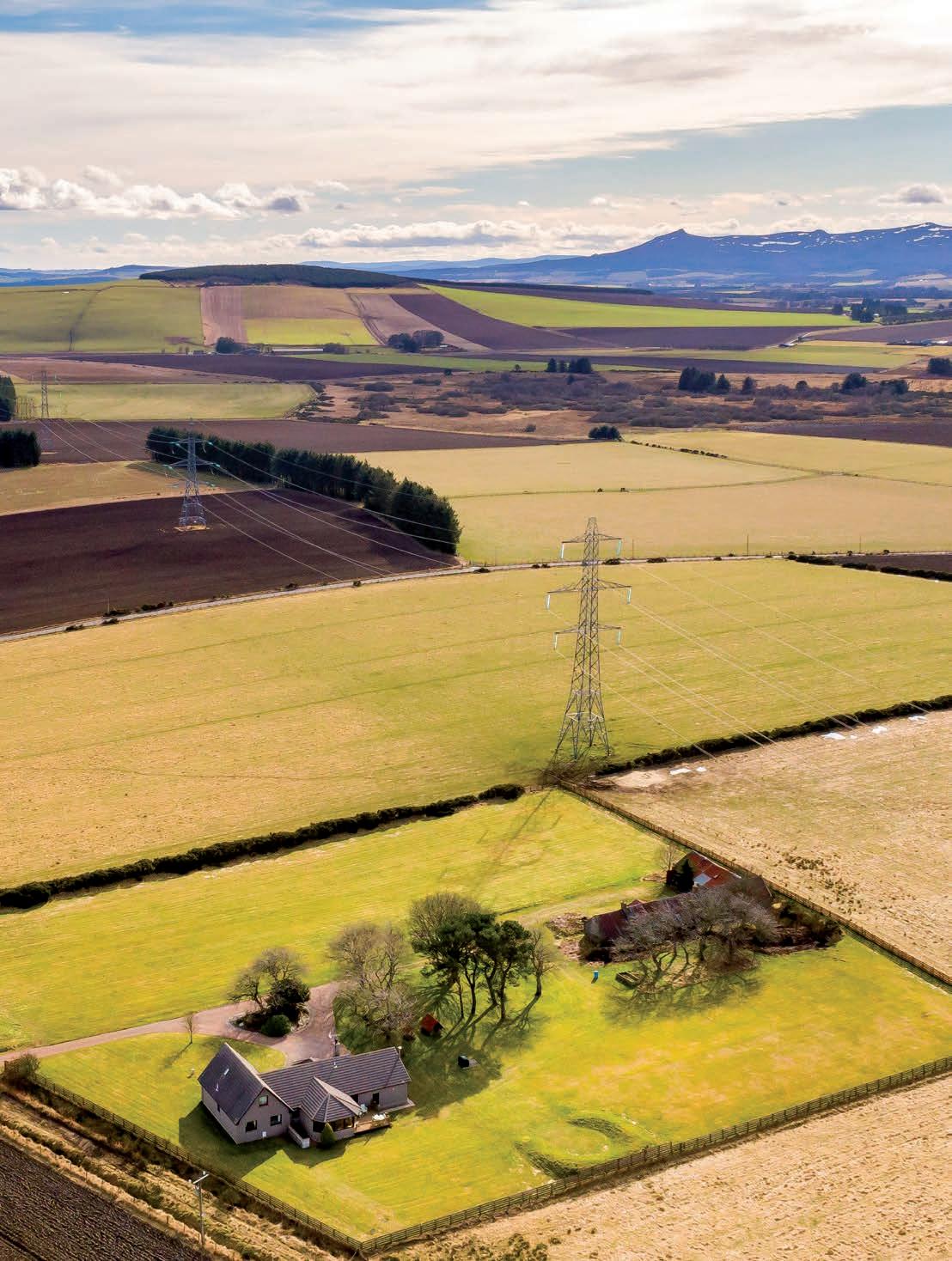
Moving Market value
Some residential surveyors have indicated around a 10% reduction in value, and we could see this increase to 20% in some circumstances. It is important that each property is assessed on a case by case basis . There is no doubt in our experience that it depends specifically how close the pylons are to the property and any garden , and where the pylon lines pass.
The value can also be impacted by the bigger picture of market conditions. In a sellers’ market, where rural properties are highly sought after and demand outweighs supply, then there could be minimal impact when it comes to the final sale price. On the other hand, if it’s a buyers’ market and there is a large supply of properties for buyers, the homeowner may find it more challenging with a greater loss on the final sale price.
Attractiveness and saleability
The attractiveness and ‘sale-ability’ of your home, in my view, is where the property will be most negatively impacted. Pylons, especially up to 180ft tall, are not aesthetically pleasing and this is often the main
reason for buyers being deterred. They can block beautiful countryside views, cause unsightly outlooks from the property’s windows and generally give an unsightly vision all-round. The other aspect, if they are particularly close to the house, is that pylons can create noise, especially during wet weather, disturbing a home-owner’s peace and quiet whilst inside and outside the house.
For these reasons buyers may deem the property less attractive and appealing than other properties they have seen. For some buyers they will simply not consider a property close to a pylon or pylon lines and dismiss it entirely. Other buyers may feel it’s a compromise they are willing to make if a lesser price can be negotiated for the house.
It very much comes down to a personal decision by the prospective buyer.
Properties and homes close to pylons and pylon lines do sell and continue to be sold to prospective buyers throughout the year. However, it does require realistic expectations and understanding from any seller that the pylons will create additional hurdles and challenges.
In any circumstances there are always options and opportunities when selling your home. At Galbraith we are familiar with the challenges pylons bring to the sale process and our experience allows us to provide you with professional, honest advice and guidance through the selling process. n





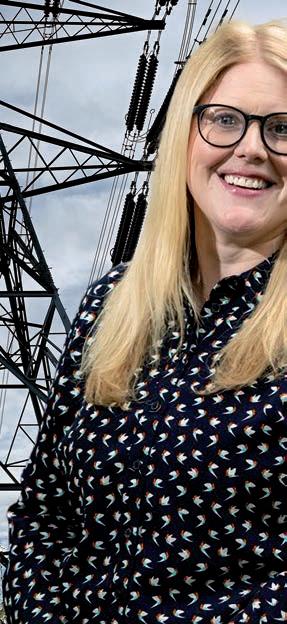
 Hannah Christiansen
Hannah Christiansen
| Property Matters | Spring 2024
Some residential surveyors have indicated around a 10% reduction in value, and we could see this increase to 20% in some circumstances.
Hannah Christiansen 01224
hannah.christiansen@galbraithgroup.com
Hilary Murray 01224 860710 hilary.murray@galbraithgroup.com
860710


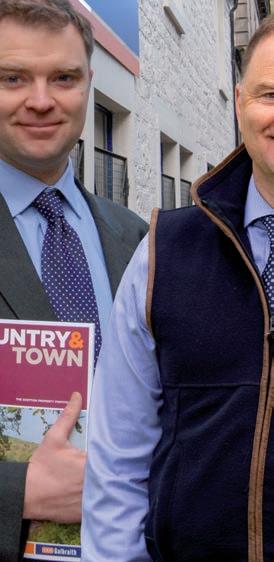
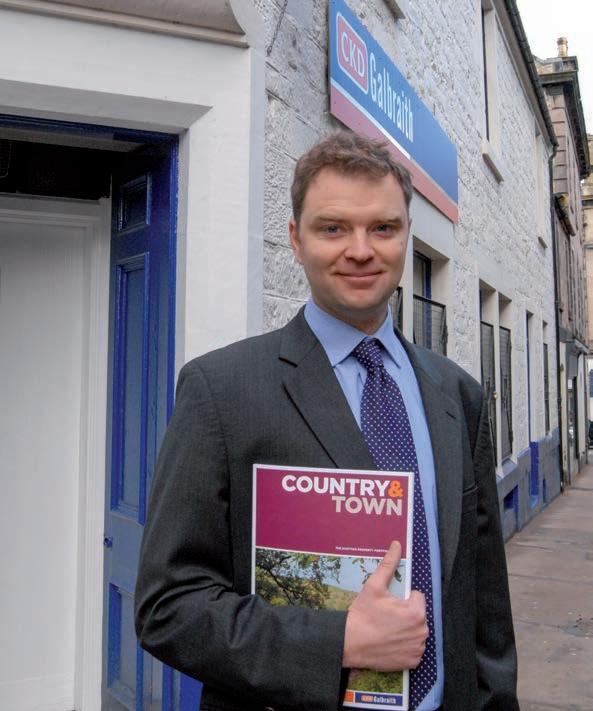
In those days, estate agency was often carried out by land agents and mixed practice surveyors as just another arm of a wide-ranging role. It was a case of being a ‘jack of all trades and master of none.’ However, it quickly became apparent that with the market and consequently estate agency practices changing rapidly, in order to do the job properly, it would need to become a dedicated specialism.
When I reflect over the 20 and more years I have been involved in the Scottish estate agency world, I have experienced the highs and lows of two clear property booms, one very rapid property market implosion, several periods of stability and a huge amount of change regarding the day-to-day processes we take for granted.
Perhaps the greatest influence on the property market over the past 20 years has been the shift from the printed medium to online. No longer do buyers have to wait for the property supplement to appear in their publication(s) of choice, scanning dozens of pages of estate agency ad’s before making calls to the respective agents in the hope the property they see in smudged print is still available to buy.
The market nowadays is very fast paced with buyers and sellers demanding an almost instantaneous response to satisfy their demand. The advent of bespoke estate

agency websites and in particular the key property portals has allowed any property to be visible to the market 24/7 and with no geographical restrictions. Pop up chat boxes on various sites allow buyers to have a dialogue with a ‘virtual’ agent whilst floor plans, videos, virtual tours and of course high-quality digital photos are all instantly available.
It is only 20 years ago that we (as agents) would receive a bundle of slides or negatives from our photographer that we would then view through a light box to make the right selection, send them (by post) to a printer who along with the text and some pretty rudimentary floor layouts, would draft up a mock brochure. After days involving several to-ings and fro-ings of various drafts, we would receive some 300 hardcopies of the printed brochures that would then need to be manually stuffed into envelopes and posted out to applicants whose details were stored on what was then an excel spreadsheet of a database. I dread to think what that would cost these days!
Thankfully, very little is physically printed these days, correspondence happens by email, and we have magnificent software packages that store huge amounts of property and applicant information allowing us to match buyers to properties and vice versa. In short, the process of
A personal service can’t be replaced
I joined our Ayr office in 2003 as a fresh faced (I say that with a degree of artistic license) newly qualified surveyor (that at least is a fact) into the role of rural estate agent.
launching a property to the market is now far slicker, comprehensive and to be frank, professional.
That said, despite all these fantastic technological advances, what has not changed is what really is at the core of a good estate agency service. That is offering a personal and dedicated service to sellers and buyers alike - something that simply cannot be delegated to a computer and software package. The technology has enhanced our estate agent’s toolbox, but it will never be more important than the ‘craft’ itself. It is still as important as it has ever been to speak (by phone or in person) to buyers and sellers, to understand their specific needs and to act accordingly. There is simply no substitute to offering a personal service and with our experienced agents and negotiators across 12 separate offices nationwide, we very much hold that ‘old school’ personal service at the heart of what we do n


Rod Christie 07766 250 797 rod.christie@galbraithgroup.com
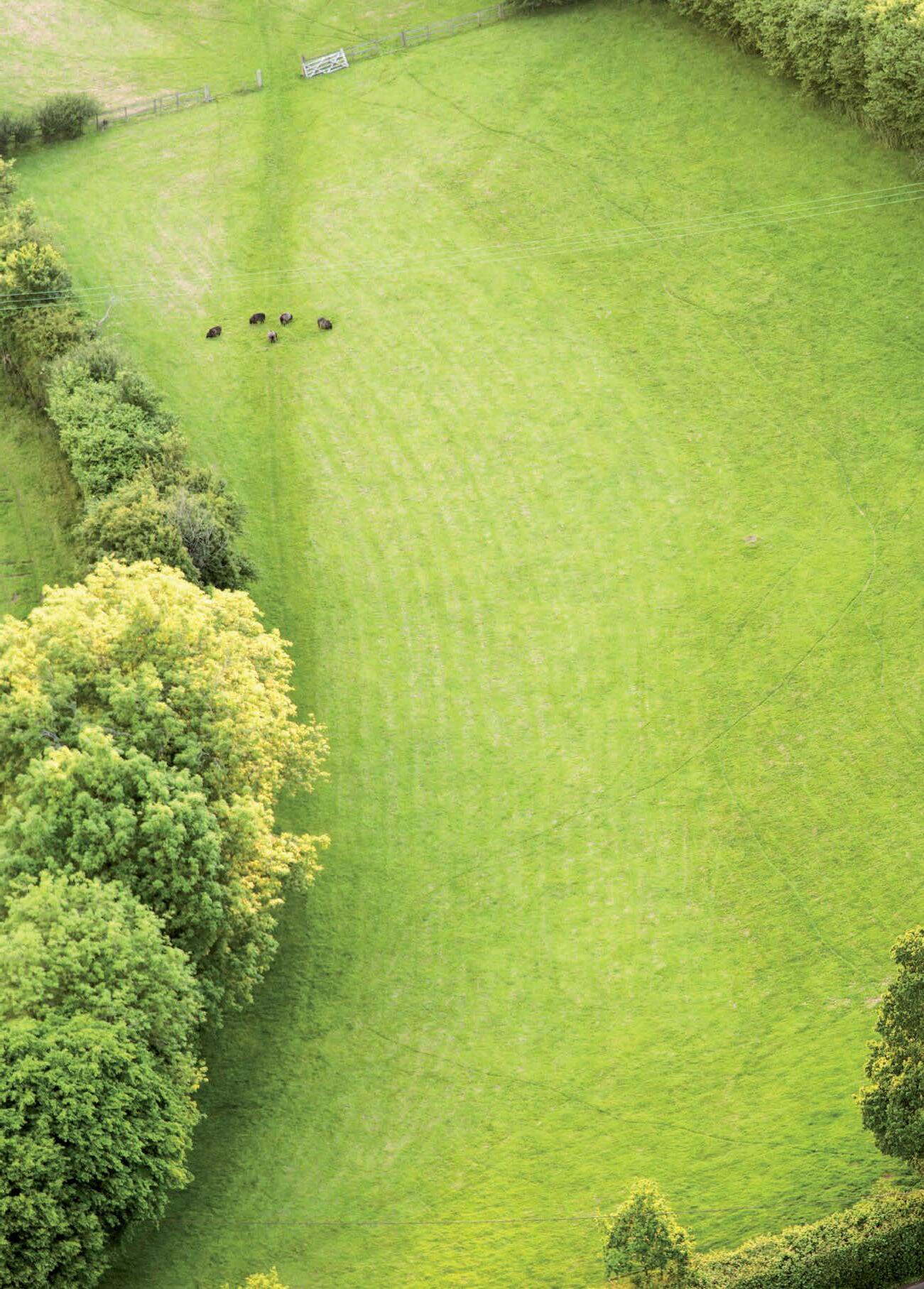
FIELD OF DREAMS

The desire to own a country property with its own land is one which has shown no signs of waning during my career and indeed over the last four years it can probably be said it has become even more desirable.
| Property Matters | Spring 2024
The attraction of amenity land can be for a multitude of reasons, be it; to enjoy the “Good Life” growing fruit and veg, keeping hens, having a few sheep, space to plant trees, hedgerows or create a pond for the benefit of wildlife - or indeed just to have one’s own space and privacy in which to relax and enjoy life.
Additionally, there are also buyers looking for land for equestrian purposes, be it to have the space for a family pony or because horses are an embedded part of their life and key part of their property search criteria.
When we as agents visit a property with a field attached, we know it will draw interest from a broad spectrum of buyers. Sometimes we visit an owner with a larger holding and the intention is to sell a cottage. If appropriate we would recommend that if a parcel of amenity land can be included with the cottage it would improve the property’s marketability, not to mention the increased return a small piece of land would give to the owner when sold with a house, rather than if either was to be sold on its own. This is because amenity land sold with a house has a higher value than bare land for agricultural or forestry purposes.
There is no specific multiplier given as the valuing of land for such purpose has many layers to it, as is the case with valuing any property. But, as a firm, we can very generally state that such ground can sell for between £10,000 and £30,000 per acre, depending on location, topography, condition etc.
Each rural property buyer keen to secure a property with land will consider it differently depending on their end goals. For example, the equestrian buyer will generally be keen to ascertain the condition of the fencing, water supply to the fields, drainage and its general topography i.e. is it too steep? can you see the land from the house? etc. Contrastingly, a purchaser looking to keep a few sheep will not be as concerned about topography, whilst the gardener wanting to create a vegetable garden, plant an orchard or extend the garden policies of the house itself, will be keen to know the ground is well drained and the condition of the soil.
Of course, enjoyment of land can vary from owner to owner and whilst specialist equestrian facilities such as; a riding arena
with a suitable surface, floodlighting and stabling are key to the equestrian buyer, the next owner may have no need for such elements and are therefore of limited value to a non-equestrian buyer who would be more interested in factors such as amenity and space.
I recently revisited a property Galbraith sold in 2012 which came with 15 acres and a riding arena; the arena is now used as a football pitch and the occasional marquee site for summer parties! We have also seen them turned into very level, well organised vegetable gardens.
The attraction of a country cottage with land should not be underestimated. In January of this year we launched to the market Inchdairnie East Lodge which had excellent equestrian facilities complemented by three acres of land. A sale was agreed two weeks after launch.
There are times when the paddock or amenity land is located on the opposite side of the road or lane from the house. This can then afford the option to potentially lot the paddock separately. However, careful consideration must be made as to whether this will generate a distraction from the main direction of the sale, i.e., the principal asset being the house and immediate grounds. In these scenarios, we often have paddocks available at a price to be agreed in addition to the house but not available to purchase on its own, thus managing expectation by the market.
We are also marketing Drums House, an elegant Georgian farmhouse near Falkland which benefits from 15 acres of grazing with a traditional steading and arena and for which we are asking offers over £950,000 and it is currently under offer.
Last year Galbraith handled the sale of Mayfield by Cupar, (offers over £895,000) which sold with over 20 acres of land as well as Harlswynd by Ceres (offers over £690,000) which sold with over 40 acres. n

Dominic
Wedderburn


dominic.wedderburn@galbraithgroup.com


01334 659 980
Scottish Farmland Market Update
Galbraith marketed over 15,000 acres (6,000 hectares) of land during 2023, which was more than the preceding 12-month period, but overall the prime farmland market remained fairly restricted during 2023.
The impact of rising interest rates has been twofold for both buyer and seller in terms of servicing of debt. The rise in interest rates from December 22 to August 23 encouraged the sale of some farming holdings which had already been struggling to achieve a viable profit margin, along with farm businesses that had existing high levels of debt exposed to variable interest rates and the resulting need to service higher repayment costs.
The preceding increases in input costs, including fertiliser, feed and fuel, have also played a significant part. From a buyer’s perspective, some buyers who were already overstretched in terms of being able to service a purchase, were not in a position to offer for some very desirable holdings. Going forward however, we expect input costs to represent less of an issue for rural businesses –fertiliser prices have now fallen by about 50 per cent compared with their peak in September 2022, and energy and fuel prices have also eased. In the final quarter of 2023, following the pause in interest rate rises, buyers appeared much more positive. Equally, lenders have become more willing to lend, providing suitable security is offered, and, more importantly, that the purchaser is in a position to service the debt at the prevailing rate and subject to more stringent stress tests.

| Property Matters | Spring 2024
SOLD DURING 2023
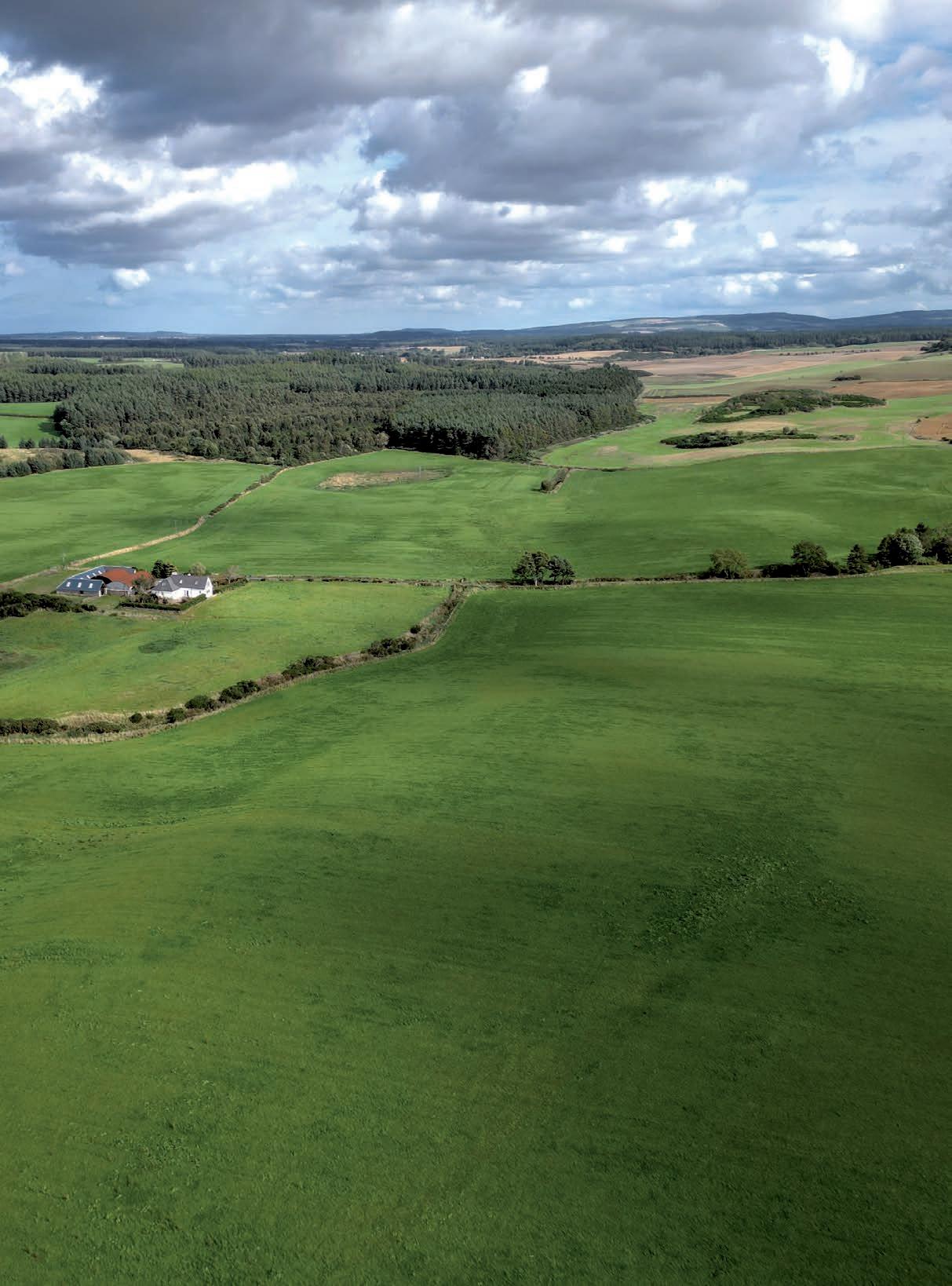
GARBLIES FARM, AULDEARN, NAIRN
OFFERS OVER £1,090,000
▪ and accessible rural setting.
▪

A delightful small farm in a stunning
About 47 hectares / 117 acres.
▪ farmhouse.
▪
▪
Attractive extended traditional
Useful traditional ‘C’ shaped steading.
Excellent quality grazing / arable land.
Ideal for those with equestrian,
▪ small holder and agricultural interests.
Property Update
has the largest network of AMC agents in the country, and we also work with a number of other financial providers...

There still remains however a shortage of land on the market, and the more productive areas of arable land in Scotland are in demand, along with less productive and marginal land, providing it is suitable for afforestation or other natural capital purposes.
Although we expect supply of more productive arable land to improve this year, the expected supply will fall way short in meeting current levels of demand, and we expect the more productive areas to hold their value
going forward, with the best arable land in the country still achieving in excess of £15,000/acre.
However, following changes to the additionality framework with respect to carbon credits, and difficulties encountered by some buyers in relation to proposed woodland creation models, some investors are now far more selective and have placed greater focus on examining any wider environmental and wildlife restrictions connected to a purchase, before a deal is agreed. There still
remains a significant element of uncertainty as to how this market will continue to develop in 2024.
We have also experienced a shift towards some more collaborative and partnership arrangements with regard to the purchase of marginal land, between funds or investors and landowners. This trend is one that we expect to continue for the foreseeable future.
The various land holdings that were launched to the market in 2023 are now in the process of completing
30
| Property Matters | Spring 2024
Property Update
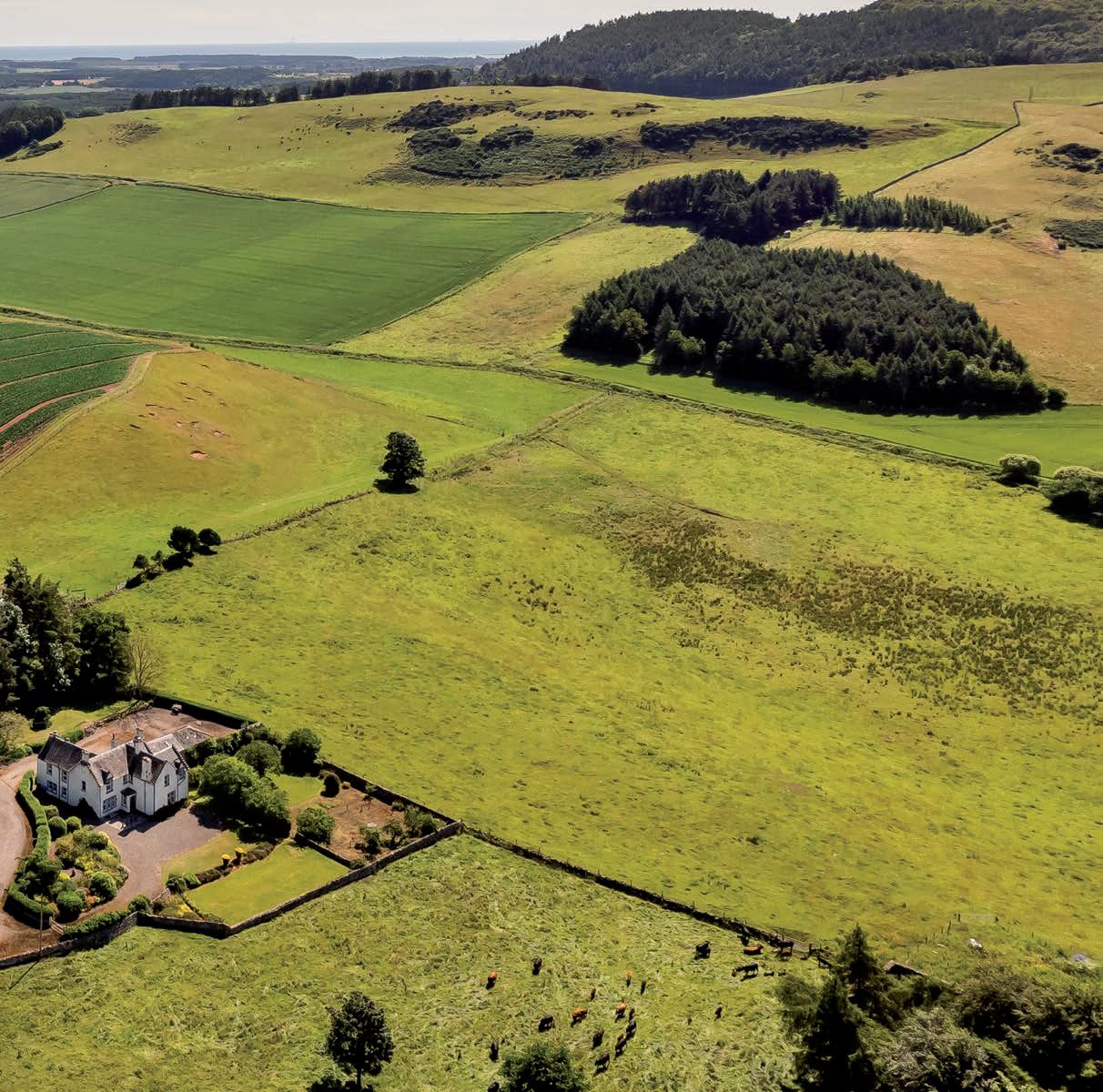
missives, or are settled. Transactions took considerably longer as lenders and purchasers were more cautious with regard to due diligence and partly influenced by the interest in natural capital which has proved to be an evolving market sector.
So far this year we have been instructed for a number of new landholdings, which will appear on the market in the next few months.
We anticipate that the fairly limited supply of land will continue this year, which will be met by a good level of
SOLD
DURING 2023
EASTER KINNEAR FARM, NEWPORT-ON-TAY, FIFE OFFERS OVER £4,200,000
A traditional farmhouse with 3
reception rooms, 5 bedrooms, set within a walled garden, orchard and paddocks.
Practical range of farm buildings and
livestock handling facilities.
617 acres in all, with 347 acres of arable
land and 259 acres of permanent pasture.
Potential for private or commercial
equestrian use.
Highly sought after and commutable
location.


demand from existing farmers encouraged by the levelling off of interest rates.
There remain a number of different types of buyer in the market, from existing farmers looking to diversify or expand their landholdings to those who have recently sold and are looking to reinvest their capital, as well as investors from outside the agricultural sector. This range of buyers chasing available land and farms continues to support a very active market.
Galbraith has the largest network of AMC agents in the country, and we also work with a number of other financial providers, so if you are looking to discuss financing options or assessing the viability of a farm expansion, please give us a call. n


▪
▪
▪
▪
▪
Duncan Barrie 01786 434 600 duncan.barrie@galbraithgroup.com
It’s a Material World
Picture a chocolate box image of a country cottage with roses round the door in just your price range and commutable for that new job… you are tempted, you book a viewing with the selling agent. You arrive and realise that the listing image was a close-up for a reason, for right next door is an open cast mine! You are furious, you have driven 300 miles and taken time off work to see this cottage - the unscrupulous agent merely shrugs.
This was the type of nightmare facing buyers before the introduction of legislation to control misleading descriptions of property for sale. In 1991 the government of the day introduced The Property Misdescriptions Act to stop false or misleading statements being made about property by agents.
22 years later, the Act was repealed and agency descriptions became subject to the Consumer Protection from Unfair Trading Regulations 2008 (CPRs). A huge part of the relevance of the CPRs for estate agency is ensuring that material information about a property is not omitted by agents. For years there was uncertainty amongst agents as to exactly what this material information should comprise. Trading Standards developed a specialist team for the oversight of estate agency in the UK, named The National Trading Standards Estate and Lettings Agency Team (NTSELAT). They have worked on a definitive framework setting out exactly what is needed so that
agents can comply with the regulations and buyers/renters have all the material information they need to make a decision about whether a property is suitable for them. This was divided into 3 parts, with guidance on Material Information Part A being released in July 2022. Covering the basics, agents were now compelled to provide specific information on every listing covering Council Tax/Rates, Price/Rent, Tenure, and Security Deposit (lets).
On 30th November 2023, NTSELAT released Material Information Parts B & C, which are much wider ranging and finally clarify exactly what your agent should be including in property details, for both sales and lettings. This will provide buyers/tenants with detailed information which should improve understanding and help avoid fallthroughs which may have occurred when previously undisclosed information came to light during the conveyancing or lettings process.
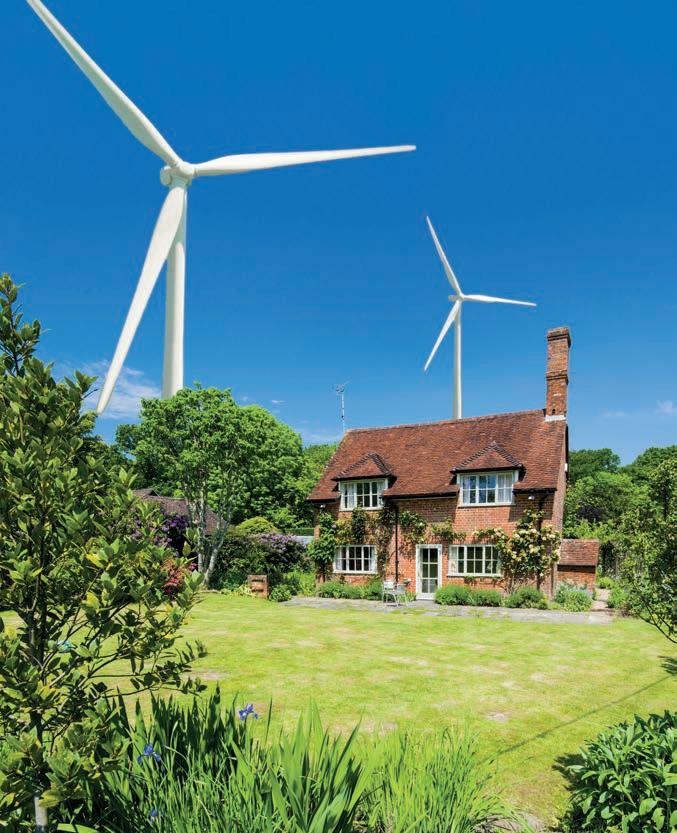
| Property Matters | Spring 2024
Part B covers:
1
Physical Characteristics -
Property Type; Construction Type; Number & Type of Rooms.
Utilities - 2
Sources of Heating; Electricity Supply; Water Supply; Sewerage; Broadband; Mobile Signal.
Parking - 3
Driveway; Garage; Allocated Space; Communal Car Park; Number of Spaces.
Part C covers:
1 Building SafetyFor example - the presence of unsafe cladding; asbestos; subsidence, and so on.
2 Rights and RestrictionsFor example - Listed Building Status; Conservation Area; Restrictive Covenants; Private rights of way such as easements, servitudes or wayleaves; Public Rights of Way.
3 Flood and Erosion RiskAgents must include any known risk of flooding or actual flooding history at the property.
4 Planning Permission and Development ProposalsExisting planning permission for the property; Planned local developments.
5 Property Accessibility and AdaptationsEg. Step- free access from the street to inside; ramps or lifts; wet room; lateral living; wheelchair accessible doors.
6 Coalfield or Mining AreaPast or present.
The framework now provides a good degree of certainty for prospective buyers and covers a lot of information which may affect the ability to secure a mortgage on the property. Sellers as well as agents will bear responsibility and may find that they need to engage with their solicitor or a surveyor at an early stage to clarify some of the required information.
So, back to that chocolate box cottage, the details of which now tell you about the mine, as well as the occupancy restriction, the flood risk and the public right of way running through the garden. You make the decision it is not for you from the comfort of your own home, saving you time, money and stress.
Galbraith have qualified and highly experienced agents in our Residential Agency and Rural teams who are available to guide and inform you through the sales and purchase process, including the new Material Information requirements. n
Marion Currie
01556 505 346 marion.currie@galbraithgroup.com
They have worked on a definitive framework setting out exactly what is needed so that agents can comply with the regulations and buyers/renters have all the material information they need to make a decision about whether a property is suitable for them.
Marion Currie

The Price is Right
The vast majority of our sales here in Ayrshire are rural homes and smallholdings with, typically, between 3 and 10 acres of land.
In most cases these properties generate significant interest. It is not uncommon to receive over 100 enquiries for an attractive smallholding in a good location, and to undertake up to 30 viewings.
The opportunity to own two or three acres of land is a huge draw for buyers – whether to grow one’s own fruit and vegetables, keep a few sheep, simply to have space, privacy, a nice garden or small woodland, or to create paddocks for equestrian use.
At the time of writing, the market is not as frantic as it was in 2021 or 2022, and there is more price sensitivity, but there remains good and consistent demand for ‘lifestyle’ properties, with some private sales working well for our clients and many smallholdings attracting competing offers.
Pricing is key to ensuring the best possible outcome for your property.
The advice I would give to sellers is to trust your agent on pricing from the outset. If your property is brought to the market at the correct price from day one, the interest generated will have a snowball effect, helping to boost excitement among potential purchasers and sustaining the momentum of the sale.
If you reject your agent’s advice and start marketing at a price that’s too high, the interest will be curtailed and ultimately this could result in an extended selling period, a lower price, or both.
The factors that affect pricing are numerous. Your agent will consider whether the property requires modernisation, the size
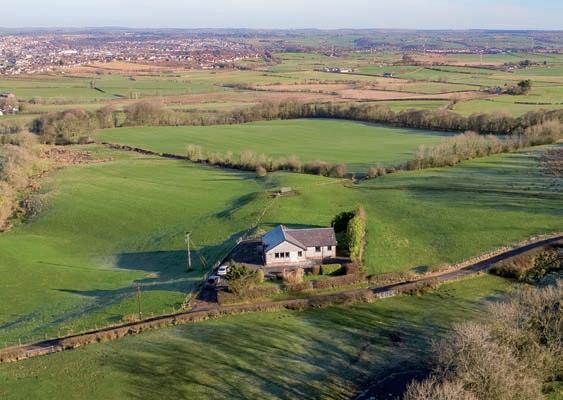
CRAIGMINE, CRAIGIE, KILMARNOCK, EAST AYRSHIRE
A detached bungalow with paddock in a peaceful rural location. Sold at a competitive closing date.
Marketed for Offers Over £295,000. 4 offers received.

| Property Matters | Spring 2024
SOLD
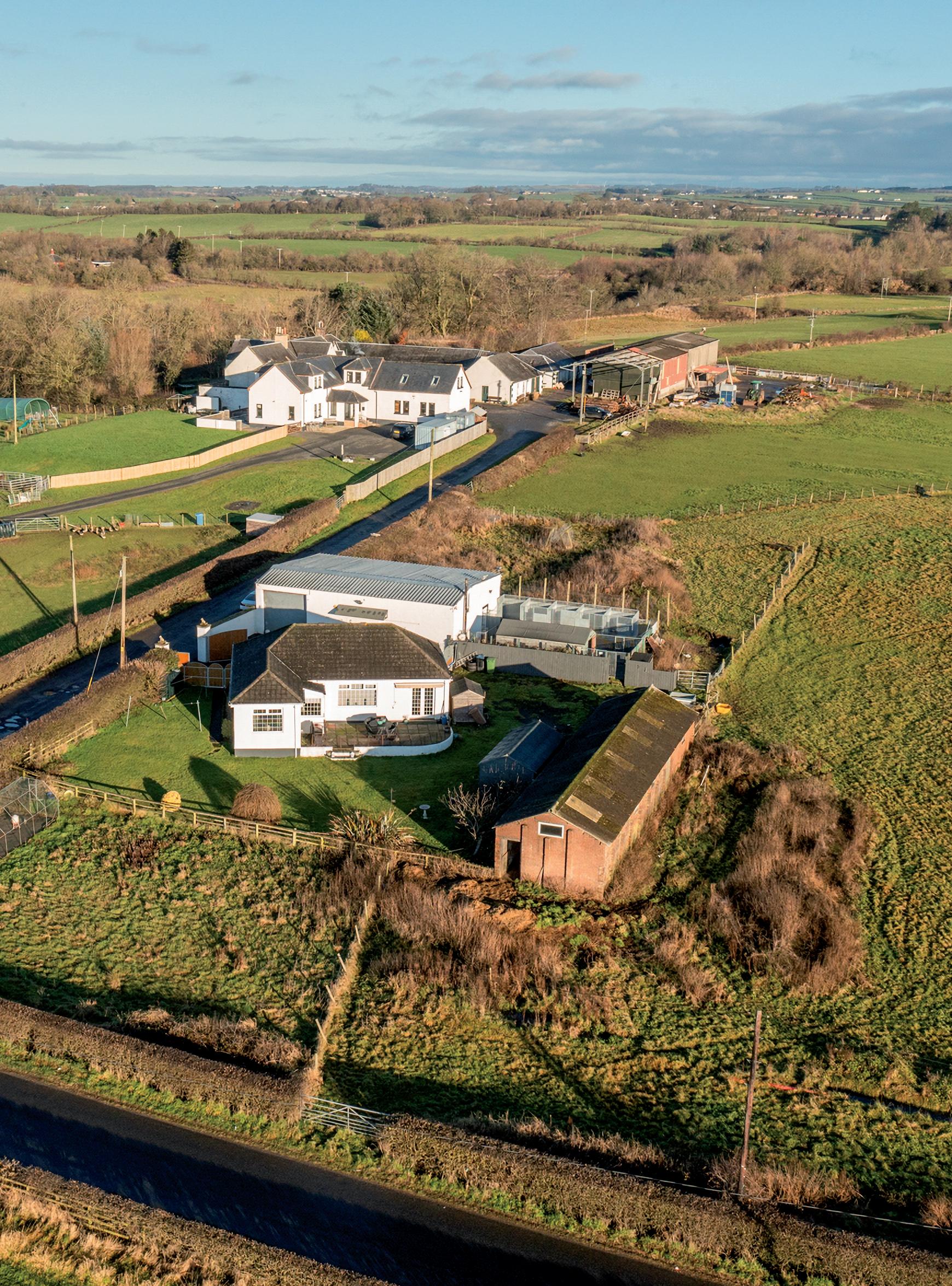
SOLD

16 GREENHILL HOLDING, KILMARNOCK,
EAST AYRSHIRE
An attractive smallholding with 3 bedroom house and about five acres of grazing land. Sold at a competitive closing date.
Marketed for Offers Over £340,000. 7 offers received.
Property Focus
and type of landholding, the size, style and character of the house itself, any unusual attributes and potential for development. This could include any outbuildings that may be suitable for conversion to create perhaps a home office, a holiday let, an annex for visiting friends and family or even for business use.
A properly priced launch to market will generate interest from the outset. Where there are competing offers, the end result will be more favourable and the whole process is likely to run more smoothly.
Our clients do have a variety of objectives when selling their home. In addition to achieving the best price, there are also considerations such as timing, and the status of the potential purchaser, that will have a major part to play in decisions.
The ‘offers over’ system in Scotland is fundamentally a marketing tool. In
SOLD
my experience it works very well. It can be frustrating for purchasers who are not familiar with the system but it is an effective way to test the market. We will always explain the system to any buyer who has not bought a property in Scotland before.
Where more than one offer is made for a property, a closing date will be set by the agent for ‘best and final offers’.
The seller is of course not obliged to accept the highest, or indeed any, offer. The agent will ascertain details of each potential purchaser and their circumstances, to help the client to make an informed decision. In some cases a buyer will be preferred if they are not in a chain, even if they have not submitted the highest bid.
Do listen to your agent and take his or her advice from the outset. Initial over-pricing may lead to an extended selling period and this may create an


impression among your target audience that there is some hidden defect relating to the property or its location – even when this is far from being the case.
Finally, if your property has lingered on the market for a few months, remember that all is not lost! It may be possible in some cases to divide the property into lots, depending on the size and type of the landholding, or it may be possible to pause the marketing and relaunch in a few months’ time, to give the market time to refresh. Your agent will advise you on the best approach.
Talk to your agent at all times, trust their judgement, and you will secure the best possible outcome for your property. n

Jake Shaw-Tan 07919 182 474

CRAIGVIEW, AUCHINCRUIVE, AYR, SOUTH AYRSHIRE
An 6 bedroom detached house within easy reach of Ayr; about 3 acres of grazing land. Sold at a competitive closing date.
Sold at a competitive closing date. Marketed for Offers Over £350,000. 5 offers received.
LAMBRIDDEN FARM, DALRY, NORTH AYRSHIRE
An attractive farmhouse situated in a peaceful yet accessible location near Dalry in the Garnock Valley, with about 11 acres of grazing land and development potential.
Sold at a competitive closing date.
Marketed for Offers Over £475,000. 4 offers received.
| Property Matters | Spring 2024
SOLD
jake.shaw-tan@galbraithgroup.com Property Focus
SOLD BALIDE, MAYBOLE, SOUTH AYRSHIRE
An attractive five-bedroom property in an enchanting rural setting with about 10 acres, stables and riding arena. Sold at a competitive closing date.
Marketed for Offers Over £495,000. 5 offers received.

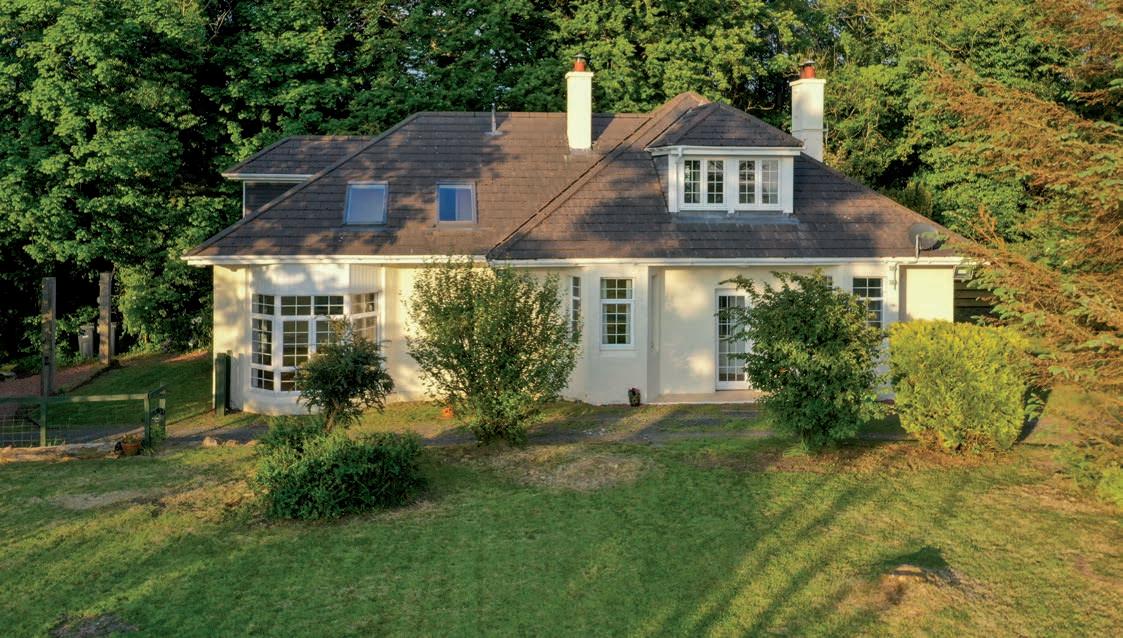
SOLD BIRKHILL, EAST AYRSHIRE
A striking 1960’s home offering extensive accommodation, in a private position on the edge of the village of Newmilns, an outstanding conservation area. Just over 10 acres in all.
Sold at a competitive closing date.
Marketed for Offers Over £395,000. 8 offers received.


The first three months of this year have brought some welcome news for house-hunters, as mortgage lenders began to offer reduced rates and a wider variety of mortgage products.
This positive development has been coupled with lower than expected inflation, which may lead to a cut in the base rate by the Bank of England later this year, according to some forecasts. But even if that doesn’t materialize, reduced inflation provides all of us with greater spending power.
The property market fared better than most experts had predicted during 2023, and the main issue here in the north of England was lack of supply.
As I write, the market is heating up again for the peak summer selling season and
THE SWEET SPOT

Northumberland is perfectly positioned in the sweet spot between relatively high property prices in the south of England and the rising tax burden in Scotland.
Although the majority of traffic is likely to continue to be from south to north (as families sell up in the southeast of England to take advantage of better value for money in the north of England and Scotland), we are starting once again to see enquiries from people considering a move from Scotland to the north of England. If you are buying a principal home valued at £1 million, the difference in the property transaction tax payable between England and Scotland is now almost £40,000. Also in Scotland, higher income tax and increases in the council tax payable on second homes create an additional disincentive. Council tax may seem a trifling

sum in comparison with the cost of a property, but any increase may prove an inhibiting factor when calculating the total cost of a house move.
There is considerable pent up purchasing demand in the north of England, due to the constricted supply over the past 18 months, which will further boost the market this year. We expect the supply of property to continue to improve, as consumer confidence returns.
Northumberland offers all the attributes that buyers currently favour as we all seek to achieve a good work-life balance - easy access to beautiful countryside and wide-open spaces, very little light pollution (the darkest night skies in England), and fresh air all contributing to a sense of wellbeing.
| Property Matters | Spring 2024

Northumberland is perfectly positioned between high prices in the south and high taxes in Scotland.
Historic market towns such as Hexham and Berwick (situated right on the border with Scotland) are regularly voted among the best places to live in the UK, for their excellent amenities, close-knit communities and proximity to beautiful scenery.
The most sought-after villages include Crookham, Chatham, Wooler and the hamlets interwoven between these, noted as a paradise for walkers, birdwatchers and nature photographers, while further to the east, the ancient parish of Belford is known for its rock climbing and its community-run cinema.
The stunning coastal towns of Alnmouth and Bamburgh are popular with visitors year-round, and properties here are holding their value well, or increasing in price. Houses in Bamburgh continued to increase in value post credit crunch (2009) whilst others tumbled in value.


Try west Cumbria, which has always flown under the radar but offers an array of property styles including some lovely Georgian homes...
Sam Gibson

| Property Matters | Spring 2024
n Historic old stone Bridge Corbridge
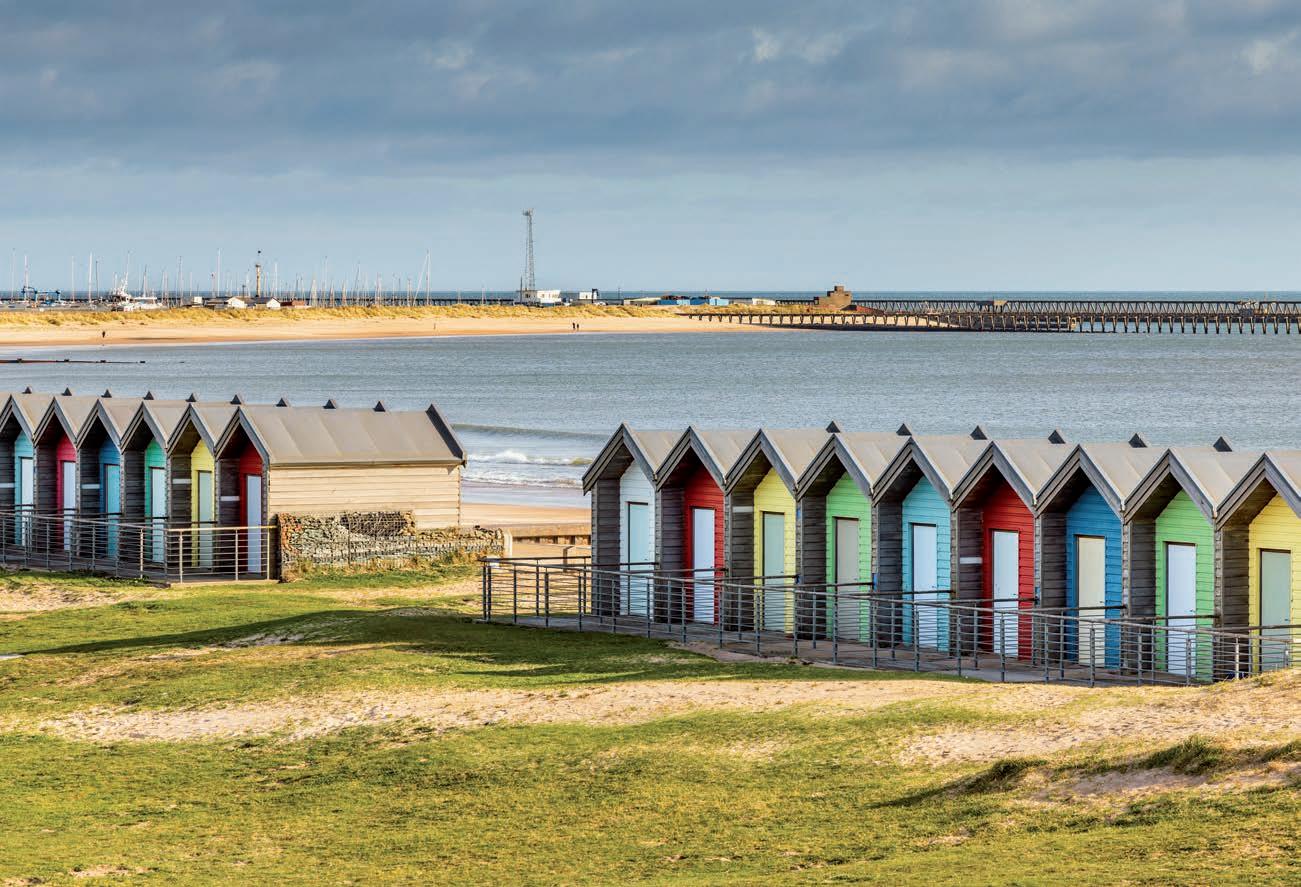
The next hot spots? Places to watch in 2024
Some of the north of England’s most sought-after locations and places to watch in 2024.
Hot-spot: Corbridge – try Riding • Mill instead or the lovely hamlets inland between Bamburgh and Belford such as Budle, Bradford and Warenton. Riding Mill is a very appealing village within a short drive of Corbridge. It also has its own train station with quick connections to Newcastle and Carlisle. Riding Mill has similar traditional architecture, with charming stone-built cottages, but your budget will certainly go further here.
Hot-spot: Bamburgh – try • Seahouses instead, which has a bustling harbour and huge sandy beaches to the north and south of the village. From Seahouses, take a ferry ride to the Farne Islands, a famous landmark and nature reserve for birds and seals.
Hot-spot: Lake District – the • stunning views and bucolic setting means the Lake District is no stranger to high prices. Property in and around the most well-known lakes such as Grasmere, Ullswater, Windermere, and Derwent Water will always command a premium. Try west Cumbria, which has always flown under the radar but offers an array of property styles including some lovely Georgian homes, along with much of the same tranquillity and beautiful scenery as the rest of the Lake District.
Hot-spot: Alnmouth – within one • of Northumberland's Areas of Outstanding Natural Beauty, Alnmouth is a picture-postcard pretty coastal resort, with its stunning sandy beach and colourful houses. Try Amble instead. Amble was considered a secondary coastal location until recently – now it has become very popular. A variety of properties are selling well here –including The Penthouse apartment at Coble Quay which offers a superb coastal lifestyle and marina.
The next hotspot may well be: • Blyth – it remains a relatively undiscovered seaside town yet has a huge sandy beach, colourful beach huts to rent and a restored lighthouse. A major rail project will bring six new train stations to Northumberland this summer – including at Blyth Bebside, as part of a major infrastructure upgrade between Newcastle and Ashington. This transport improvement is likely to help generate interest in the property market resulting in increases in capital values in the area.
If you are looking for a new home in 2024 please contact me for an informal and confidential discussion. n
Sam Gibson
07769 687 978 sam.gibson@galbraithgroup.com
n Beach Huts Blyth
1
The New Repairing Standard
From the 1st March 2024 the New Repairing Standard comes into effect for properties let in the private rented sector.
Safe Kitchens. The repairing standard will be amended to include a requirement to have safely accessible food storage and food preparation space in a private rented house.
2
Fixed Heating System. The existing duty to ensure that installations for the supply of heating are in a reasonable state of repair and in proper working order will be amended to specify that there must be a fixed heating system in a private rented house.
3
Safe Access to Common Parts. The existing duty to ensure that the structure and exterior of the house is in a reasonable state of repair and in proper working order will be amended to specify that where a private rented house is a flat in a tenement, the tenant must be able to safely access and use any common parts of the tenement, such as common closes.
The Repairing Standard Is the minimum level of repair a house must achieve to be used as privately rented accommodation in Scotland. It focuses on the building condition and also includes all installations, fittings and furnishings that are provided in the Tenancy Agreement.
Private Landlords are also required to meet aspects relating to safety, heating and access to common parts of a tenement, if applicable.

Marsaili Macleod 01463 245382

marsaili.macleod@galbraithgroup.com


Sarah Hazzard 07717 227 390
sarah.hazzard@galbraithgroup.com

4
Consent to Work on Common Parts. Section 16 of the Housing (Scotland) Act 2006, which deals with exceptions to the landlord’s repairing duty, is amended to make it clear that a private rented house which is a flat in a tenement does not fail the repairing standard if work otherwise needed to comply with the standard cannot be carried out because a majority of owners in the tenement have refused consent to carry out the work.
| Property Matters | Spring 2024
5
Safe
and Secure Common Doors. The existing duty to ensure fire safety in private rented houses will be amended to specify that common doors must be secure and fitted with satisfactory locks. This will be supported by Scottish Government guidance which will specify that locks must allow users to open them from the inside without a key so that they do not inhibit exit in the event of a fire.

6
Residual Current Devices. The existing duty to ensure that installations for the supply of electricity in a private rented house are in a reasonable state of repair and in proper working order will be amended to specify that these must include a residual current device (a device to reduce the risk of electrocution and fire by breaking the circuit in the event of a fault).
The changes/updates are listed here:
Another important point to note is that properties built before 1970 must have a water test undertaken, to ensure no lead is present in the water from the pipes that lead from the boundary stopcock to the main source of drinking water within the property. This is not necessary for properties built after 1970 as lead pipes have been banned from use in buildings since then.
Scottish water can help with testing and any queries 0800 077 8778
We do not believe that compliance with these new requirements will prove particularly difficult or onerous for landlords. If you have a property that you would like to let, or to discuss any modification to an existing let property, please contact your local agent. n
7
Other Fuels. The existing duty to ensure that installations for the supply of gas and electricity in a private rented house are in a reasonable state of repair and in proper working order will be extended to any other type of fuel.
The importance of having the right agent
Having the right agent is paramount BUT what is the right agent?

When we arrived in Kelso on the day of moving June 2019, we had major problems with the funds not being transferred to the seller. All incredibly stressful and the staff at Galbraith were amazing and so kind. We have never forgotten that kindness which is why we came to you for advice this time. Once again you have been of great help. We will definitely come to Galbraith when we decide to move again and will always recommend you.


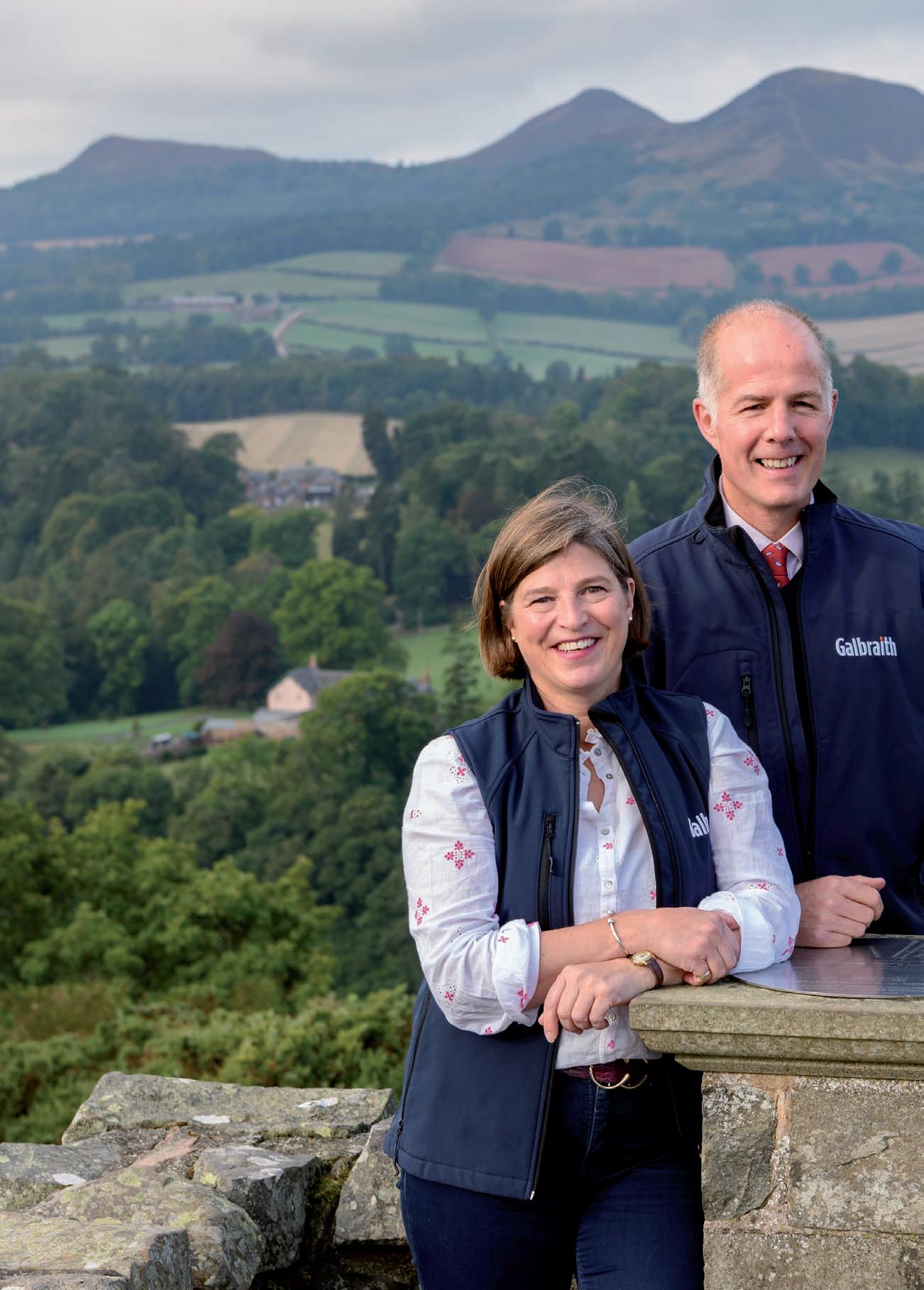
| Property Matters | Spring 2024
It is my pleasure to wholeheartedly endorse Mark and the team at Galbraith Estate Agents in Kelso for their outstanding kindness, advice, and support throughout our property journey. From the moment we embarked on purchasing in 2022 to our recent sale, the team has been an invaluable source of guidance and assistance. Their unwavering support made us feel like genuine partners as we navigated the complexities of our first-time purchase and subsequent sale in Scotland. Mark and his team demonstrated professionalism, expertise, and genuine care at every step of the process, ensuring that our needs were met and our concerns addressed promptly and effectively.

A local agent – this was a 'must have' pre-digital age but in this era of everything at your fingertips and on screen, your agent has the ability to reach the world on your behalf.

More important would be the knowledge base, expertise in the area you need to help guide you through the maze that is your marketing campaign.
Yet, even more important, is trust. Your trust in the person to help you reach the final step. get to know your agent is to trust your agent. They will become your friend, someone to rely on, to confide in, to question knowing you will get honest advice as you would from your own personal friends. This would become someone you would come back to again and again to work with in the future.
Selling your home can be like giving up an old friend so finding a new friend to help you through this can take the stress away.


So what is the right agent?
Have you heard of them?
Are they active in the area of the property market you are considering?
Are they experts in the field you are looking at?
4
Are they an established agent?
Is their knowledge base extensive to 5 meet all your needs?
6
Are they approachable?
As with any service or purchase we look for quality in the produce, expertise in the service, trust in the person/company and this is also what we should look for when selling our home, the place we have lived in and loved for years, or even just a few years.
From the first meeting to you finally saying goodbye to your old home and moving on to the next chapter in your life your friend is with you throughout. n

Kathleen McIntee
01573 224244


kathleen.mcintee@galbraithgroup.com


MARKET READY?
| Property Matters | Spring 2024
As chartered surveyors, property consultants and land managers, we understand all aspects of property ownership and how to maximise its value for our clients.
Low-cost fixes to help your home appeal to a wide range of buyers
There are many cost-effective ways to help your home appeal to the largest number of viewers and potential buyers. While some buyers want to take on a complete ‘fixer-upper’ and make it their own, others will carefully evaluate all the available properties on the market, assessing the cost of any renovation or refurbishment work against the price. Your agent will advise you on the best pricing strategies but what can you do to ensure your house does not linger on the market?
For properties where the home report has been carried out and a dreaded ‘3’ appears in the category for dampness, rot, and infestation. The best thing a seller can do is instruct a damp surveyor to carry out a survey for the works required with a quotation as to the cost. This puts most buyer’s mind at ease and gives them a clear picture of what needs to be done instead of leaving them to guess and potentially imagine a far higher remedial cost.
Lighting is a cheap and simple way to improve the perception of any property. The ability to see the whole of a room clearly might sound simple but is often overlooked. Energy-saving light bulbs do not necessarily light rooms well enough, especially in the winter and may leave rooms looking rather dark and dingy. Ensure that there is adequate lighting and consider table lamps as well as a central ceiling light.
Creating an inviting atmosphere is very important at viewings and the easiest way to do this other than with a smile is to heat the property in good time before the viewing. Cold can often feel damp and put people off the property while they are viewing.
Virtual staging is a cost-effective way to enable people to see how a property could look either once refurbished or once furnished. This helps people get a better grasp of the space on offer and provides a visual aid to the agent who is talking the buyer through the different rooms during the viewing.
Home improvements
Redecorate, if it hasn’t been done in a while a fresh lick of paint can go a long way in helping a property feel fresh.
Fix any defects, peeling paint, dirty walls, pen marks, stains, lifting flooring to name a few all start to add up in the mind of a viewer and what may seem like small problems can seriously affect the value when it comes to the offering stage.
Decluttering is a term you have probably heard repeatedly but that is because it matters, people struggle to picture rooms if there are too many items crowding every shelf and tabletop.
Garden and kerb appeal
If you have a front garden, spend a little time sprucing it up. A few plant pots and a clear pathway can make the front of your house more appealing, significantly helping with first impressions. We have also seen a rise during lockdown of people creating outdoor rooms, garden huts, and office pods. Tidying these spaces to show their potential may sway a buyer who needs to work from home.
Kitchen cabinetry
A simple but affordable way to put life back in a kitchen is to recover the kitchen cabinets and perhaps the splash back. High-quality vinyl coverings are available mimicking various materials that can turn a high quality but older kitchen to looking more modern and appealing.
If in doubt, discuss with your agent at the very outset and allow some time to refresh your home before bringing it to the market. This will pay dividends in terms of generating greater interest and ultimately, achieving a smooth sale. n

Murray Chisholm 07557 571 644


murray.chisholm@galbraithgroup.com

Aberdeen 01224 860 710
aberdeen@galbraithgroup.com
Ayr 01292 268 181
ayr@galbraithgroup.com
Blagdon 01670 789 621
blagdon@galbraithgroup.com
Castle Douglas 01556 505 346
castledouglas@galbraithgroup.com
Cupar 01334 659 980
cupar@galbraithgroup.com
Edinburgh 0131 240 6960
edinburgh@galbraithgroup.com
Hexham 01434 693 693
hexham@galbraithgroup.com
Inverness 01463 224 343
inverness@galbraithgroup.com
Kelso 01573 224 244
kelso@galbraithgroup.com
Morpeth 01670 331 500
morpeth@galbraithgroup.com
Penrith 01768 800 830
penrith@galbraithgroup.com
Perth 01738 451 111 perth@galbraithgroup.com
Stirling 01786 434 600 stirling@galbraithgroup.com
Galbraith operates from 13 offices across Scotland and Northern England, bringing our clients a wealth of experience in:
• Building consultancy
• Commercial forestry & woodland management
• Commercial property sales & management
• Estate, farm & forestry sales & acquisitions
• Estates, farming & land management
• Natural capital & carbon
• Property lettings
• Renewables and utilities
• Residential estate agency
Expertise

















 Marion Currie
Marion Currie






 n Pluscarden Estate, Elgin
n Pluscarden Estate, Elgin




 n Kilravock Castle Estate, Inverness
n Kilravock Castle Estate, Inverness


























































 Hannah Christiansen
Hannah Christiansen




























































